Special Report
The Best and Worst Prepared States for Weather Emergencies

Published:
Last Updated:

Unpredictable weather disasters can take many forms, from hurricanes and blizzards to tornadoes and raging wildfires. While some are more common in certain areas – for example, severe tropical storms in Florida – they can strike anywhere. Yes, even California can get more than 6 feet of snow in just one day – this was one of the biggest snowfall records in U.S. history.
Throughout history, people have learned from their experiences. After an unexpected problem has occurred, they tried to think of how to prevent or minimize the consequences of future disasters.
A recent study by the National Institute of Building Sciences found that the United States is not as prepared as it should be for natural hazards. For each $1 spent on hazard mitigation today, the country can save $6 in future disaster costs, like spending money on building stronger buildings to reduce long-term damage. While the country as a whole can be better prepared, the level of preparedness varies between states, and some states are better prepared to face whatever Mother Nature throws at them than others – and these are the worst natural catastrophes in every state.
24/7 Tempo identified the best and worst prepared states for a weather emergency based on four factors: the number of natural disasters declared per state; how much money each state allocated for emergency management; the number of National Guard members, who usually responds first; and the infrastructure score of every state.
Extreme weather events are becoming more common. Several of the most powerful hurricanes of all time occurred within the last 10 years. An emergency is usually declared when local government can’t handle the weather event and when authorities and resources, such as incident command system and extra funds for more personnel, equipment, and supplies, are unavailable. In general, the most prepared states for weather emergencies, according to our index, tend to be those that have declared states disasters the fewest times.
States that allocate more money towards emergency management, such as funds for fires, earthquakes, floods, tornadoes, and hazardous materials, rank as better prepared. Three of the five best prepared states also set among the highest shares of their total annual budget for the department in charge of handling emergencies.
Natural disasters can often result in medical emergencies. The risk of a disease outbreak is much higher after a weather catastrophe primarily due to population displacement. There hasn’t been a public health emergency on U.S. soil in years, partially because health officials have become more prepared — and these are the most prepared states for medical emergencies.
Click here to see the best and worst prepared states for weather emergencies.
To identify the best and worst prepared states for unpredictable weather emergencies, 24/7 Tempo constructed an index of four measures: 1) the number of disasters declared by the state since 1953 as published by the Federal Emergency Management Authority (FEMA), adjusted for the current population; 2) the number of National Guard members in reserve in the state, as published by the U.S. Department of Defense’s Defense Manpower Data Center on March 31, 2019, adjusted for the current population; 3) the state’s FY2017 emergency department budget as a share of that state’s total budget, as published in a May 2018 paper published by SUNY Albany: “Homeland Security/Emergency Management Budgets by Each U.S. State: Why do some states allocate so much more money than others do?”; 4) each state’s Physical Environment and Infrastructure subdomain score out of 10 from the 2018 National Health Security Preparedness Index, which rates states based on the quality of bridges, flood insurance policies, populations in flood zones, climate adaptation plans, and the integrity of water control systems. State population figures are from the U.S. Census Bureau’s Population Survey and are as of July 1, 2018.
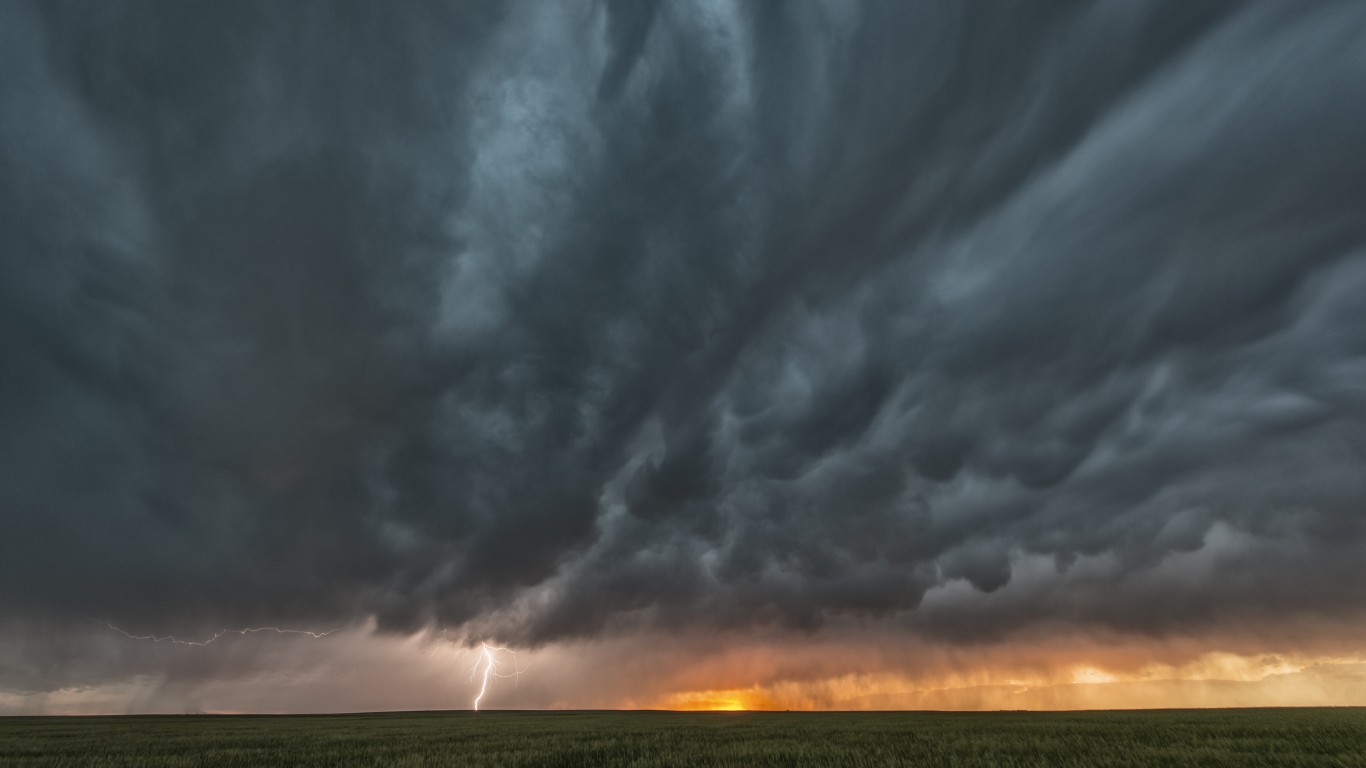
50. South Dakota
> Disasters declared since 1953: 73 (18th most)
> National guard members: 4,679 (5.3 per 1,000 residents)
> State emergency dept. budget: $11.3 million (0.24% of total budget)
> Infrastructure score: 3.5 out of 10 (8th lowest)
> Population: 882,235
[in-text-ad]

49. Ohio
> Disasters declared since 1953: 57 (17th fewest)
> National guard members: 28,064 (2.4 per 1,000 residents)
> State emergency dept. budget: $2.1 million (0.0003% of total budget)
> Infrastructure score: 2.6 out of 10 (2nd lowest)
> Population: 11,689,442

48. Tennessee
> Disasters declared since 1953: 70 (tied — 20th most)
> National guard members: 18,000 (2.7 per 1,000 residents)
> State emergency dept. budget: $3.8 million (0.01% of total budget)
> Infrastructure score: 2.7 out of 10 (3rd lowest)
> Population: 6,770,010

47. Nevada
> Disasters declared since 1953: 86 (tied — 11th most)
> National guard members: 7,734 (2.5 per 1,000 residents)
> State emergency dept. budget: $4.5 million (0.04% of total budget)
> Infrastructure score: 4.0 out of 10 (tied — 17th lowest)
> Population: 3,034,392
[in-text-ad-2]
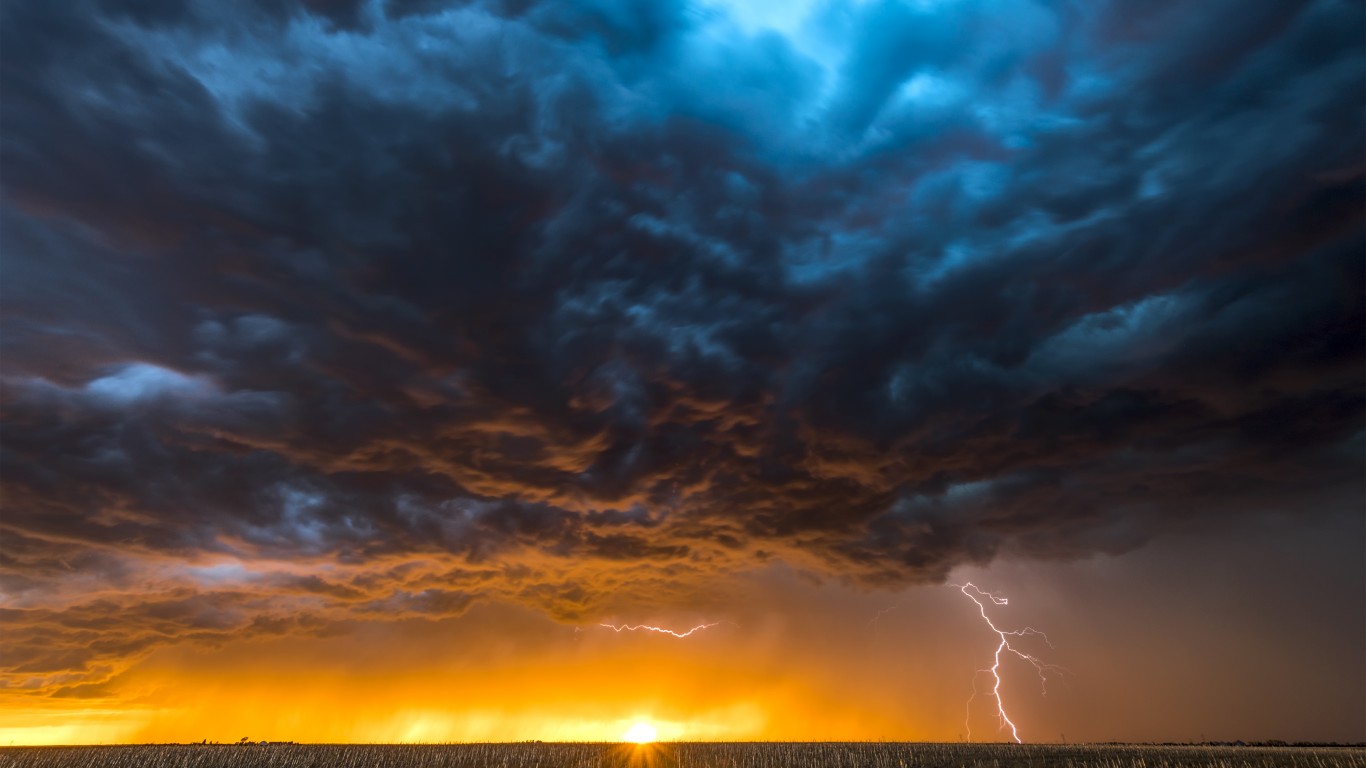
46. New Mexico
> Disasters declared since 1953: 87 (tied — 9th most)
> National guard members: 5,026 (2.4 per 1,000 residents)
> State emergency dept. budget: $17.9 million (0.11% of total budget)
> Infrastructure score: 4.8 out of 10 (20th lowest)
> Population: 2,095,428

45. Nebraska
> Disasters declared since 1953: 65 (23rd fewest)
> National guard members: 6,025 (3.1 per 1,000 residents)
> State emergency dept. budget: $1.4 million (0.03% of total budget)
> Infrastructure score: 3.9 out of 10 (15th lowest)
> Population: 1,929,268
[in-text-ad]
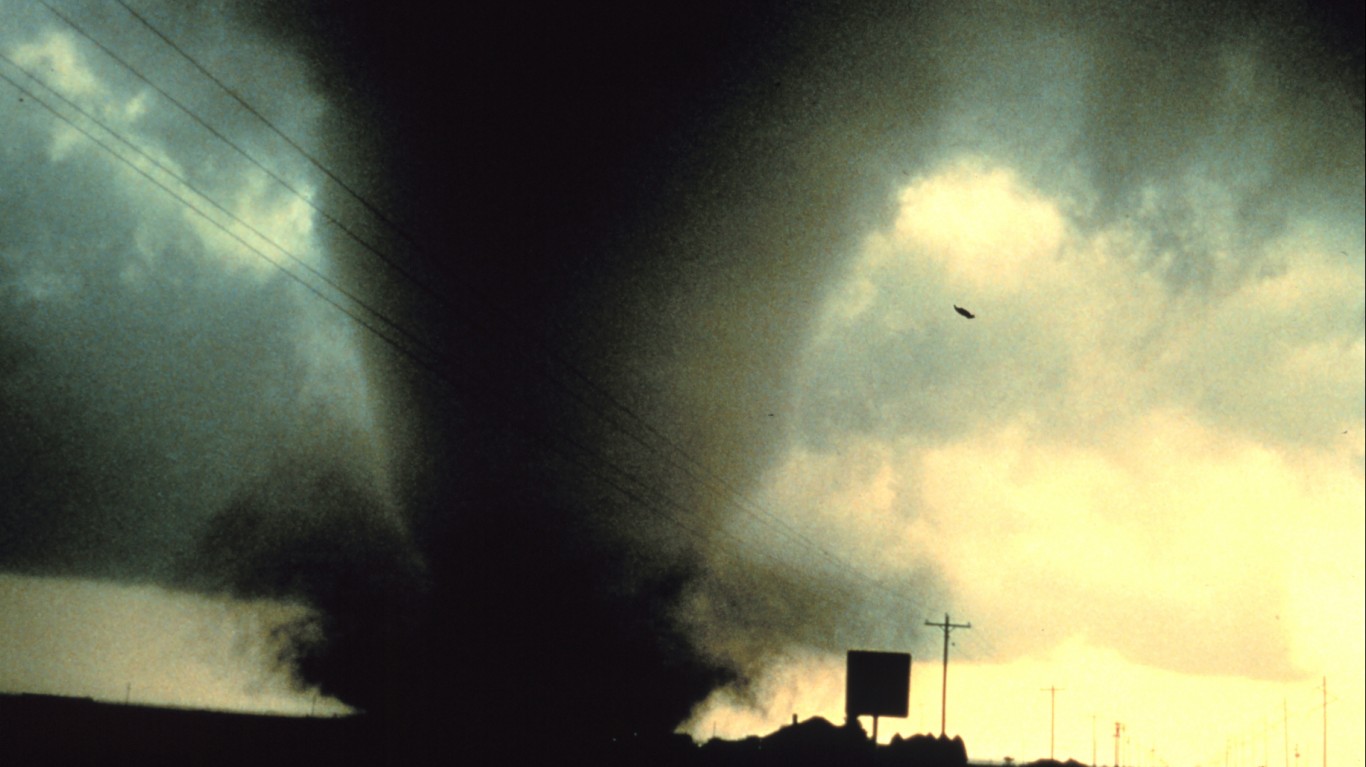
44. Texas
> Disasters declared since 1953: 352 (the most)
> National guard members: 54,421 (1.9 per 1,000 residents)
> State emergency dept. budget: $21.5 million (0.01% of total budget)
> Infrastructure score: 4.0 out of 10 (tied — 17th lowest)
> Population: 28,701,845
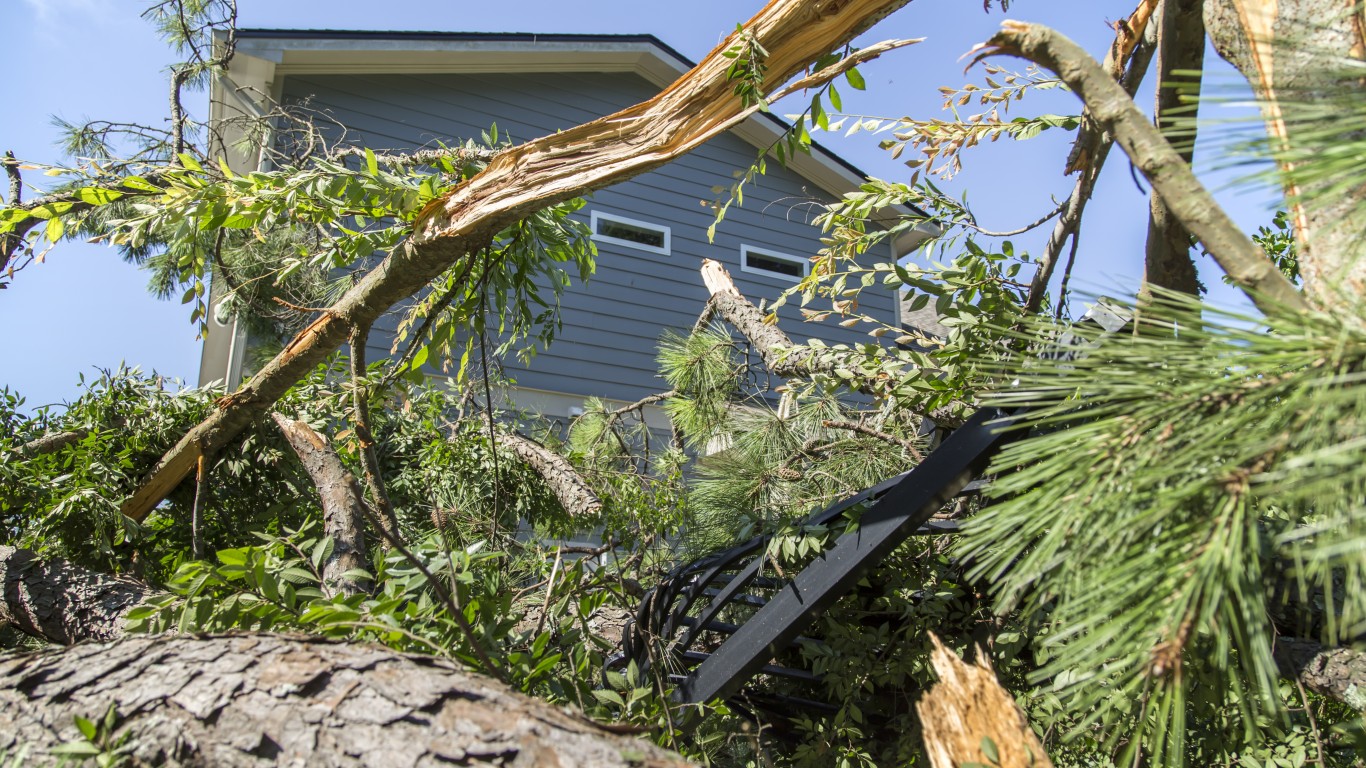
43. Georgia
> Disasters declared since 1953: 67 (tied — 24th most)
> National guard members: 27,006 (2.6 per 1,000 residents)
> State emergency dept. budget: $33.3 million (0.14% of total budget)
> Infrastructure score: 2.9 out of 10 (4th lowest)
> Population: 10,519,475

42. Wyoming
> Disasters declared since 1953: 34 (tied — 6th fewest)
> National guard members: 2,922 (5.1 per 1,000 residents)
> State emergency dept. budget: $23.8 million (0.30% of total budget)
> Infrastructure score: 3.3 out of 10 (7th lowest)
> Population: 577,737
[in-text-ad-2]
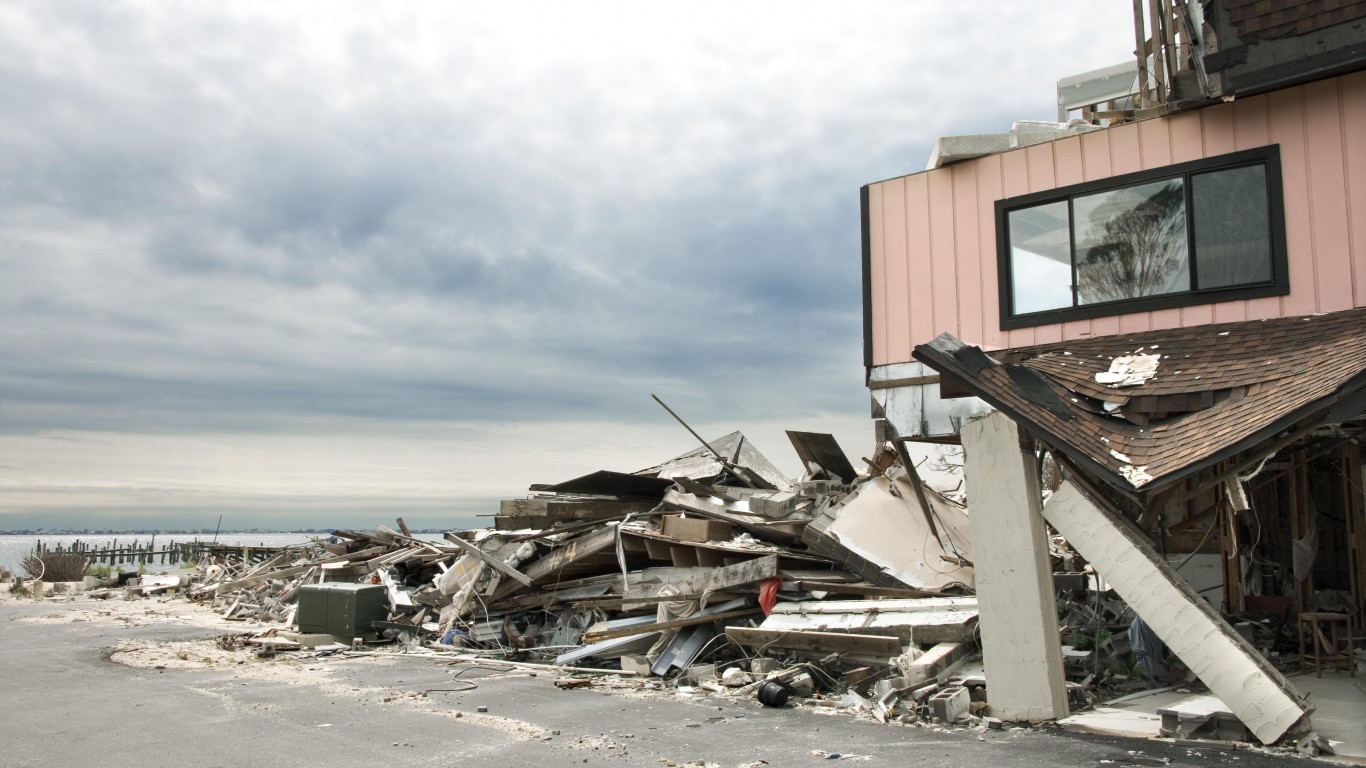
41. Alabama
> Disasters declared since 1953: 87 (tied — 9th most)
> National guard members: 19,083 (3.9 per 1,000 residents)
> State emergency dept. budget: $68.1 million (0.26% of total budget)
> Infrastructure score: 2.2 out of 10 (the lowest)
> Population: 4,887,871
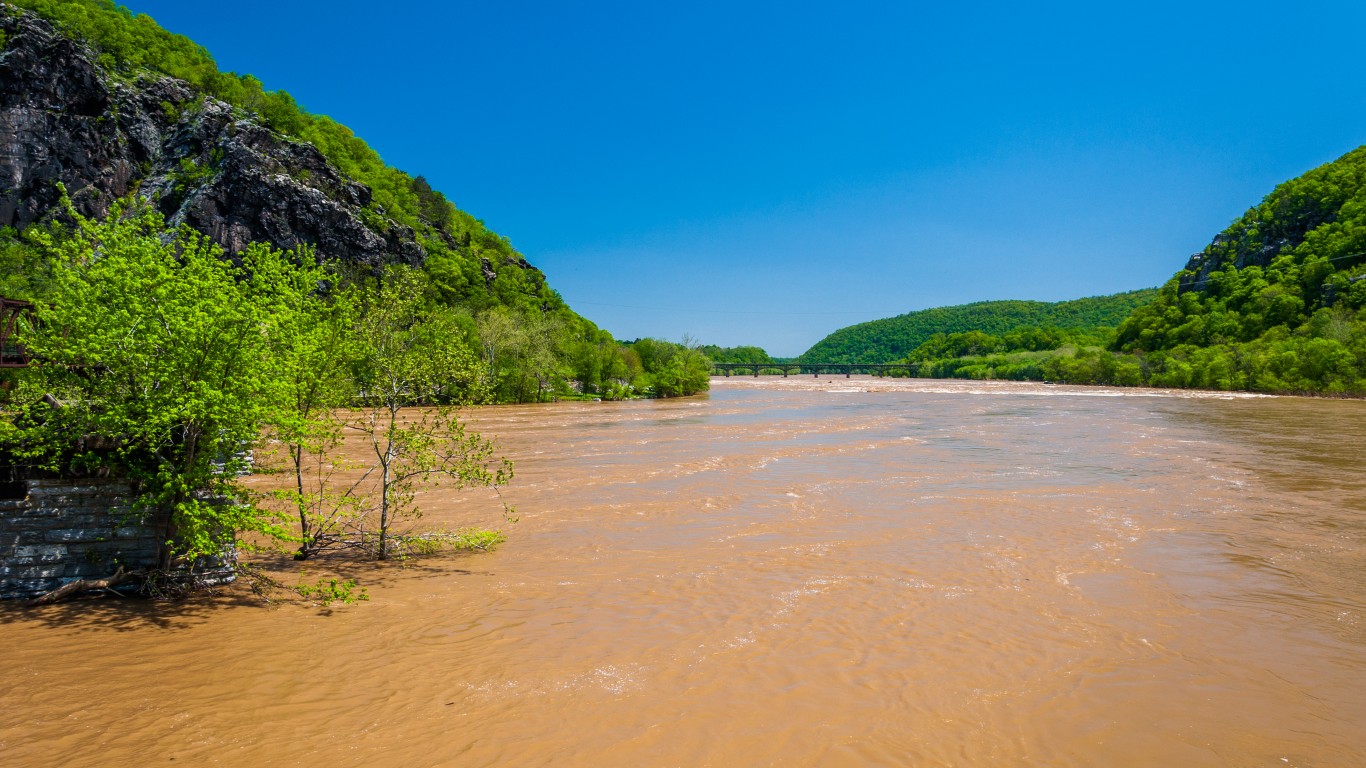
40. West Virginia
> Disasters declared since 1953: 70 (tied — 20th most)
> National guard members: 8,210 (4.5 per 1,000 residents)
> State emergency dept. budget: $2.2 million (0.005% of total budget)
> Infrastructure score: 3.7 out of 10 (tied — 14th lowest)
> Population: 1,805,832
[in-text-ad]
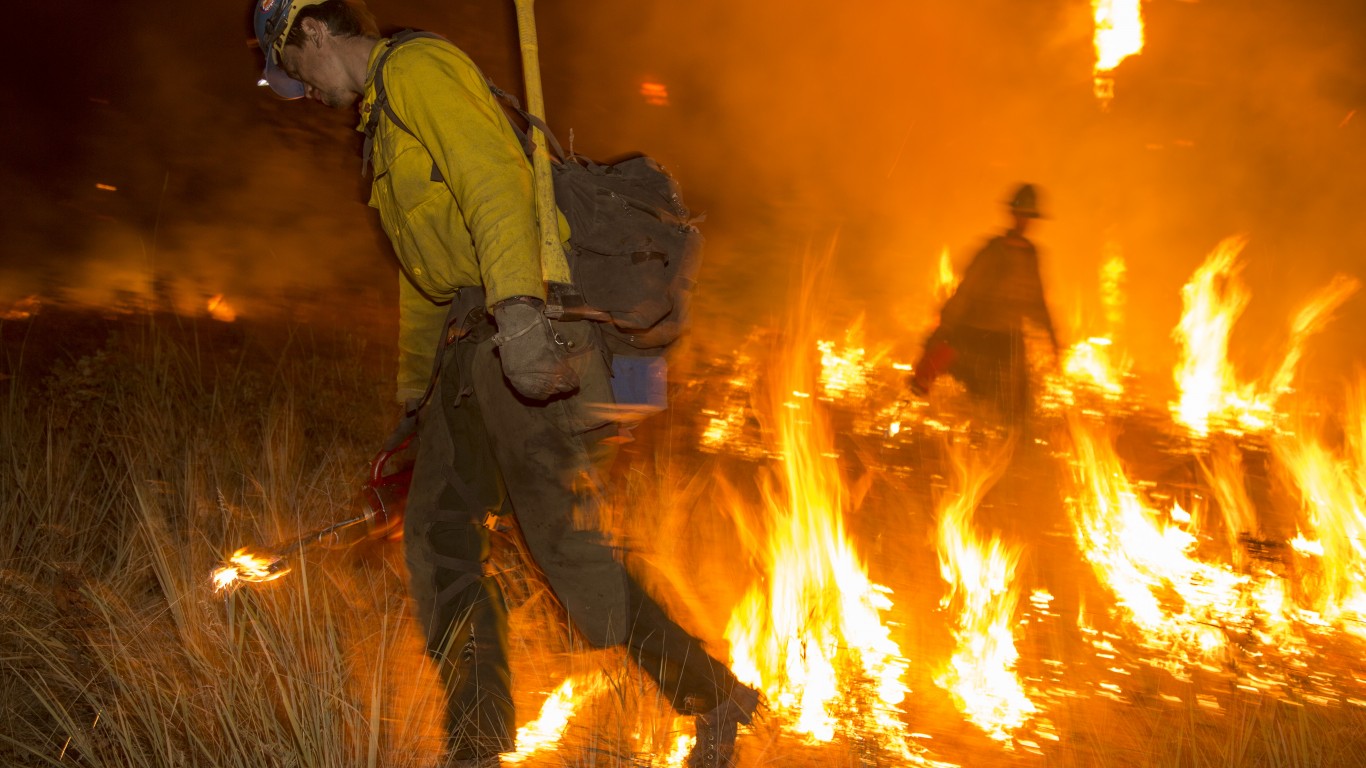
39. Idaho
> Disasters declared since 1953: 48 (10th fewest)
> National guard members: 5,525 (3.1 per 1,000 residents)
> State emergency dept. budget: $11.0 million (0.32% of total budget)
> Infrastructure score: 3.7 out of 10 (tied — 14th lowest)
> Population: 1,754,208

38. Kansas
> Disasters declared since 1953: 74 (17th most)
> National guard members: 10,082 (3.5 per 1,000 residents)
> State emergency dept. budget: $20.6 million (0.13% of total budget)
> Infrastructure score: 3.7 out of 10 (tied — 14th lowest)
> Population: 2,911,505

37. Arkansas
> Disasters declared since 1953: 72 (19th most)
> National guard members: 10,815 (3.6 per 1,000 residents)
> State emergency dept. budget: $27.9 million (0.09% of total budget)
> Infrastructure score: 3.7 out of 10 (tied — 14th lowest)
> Population: 3,013,825
[in-text-ad-2]
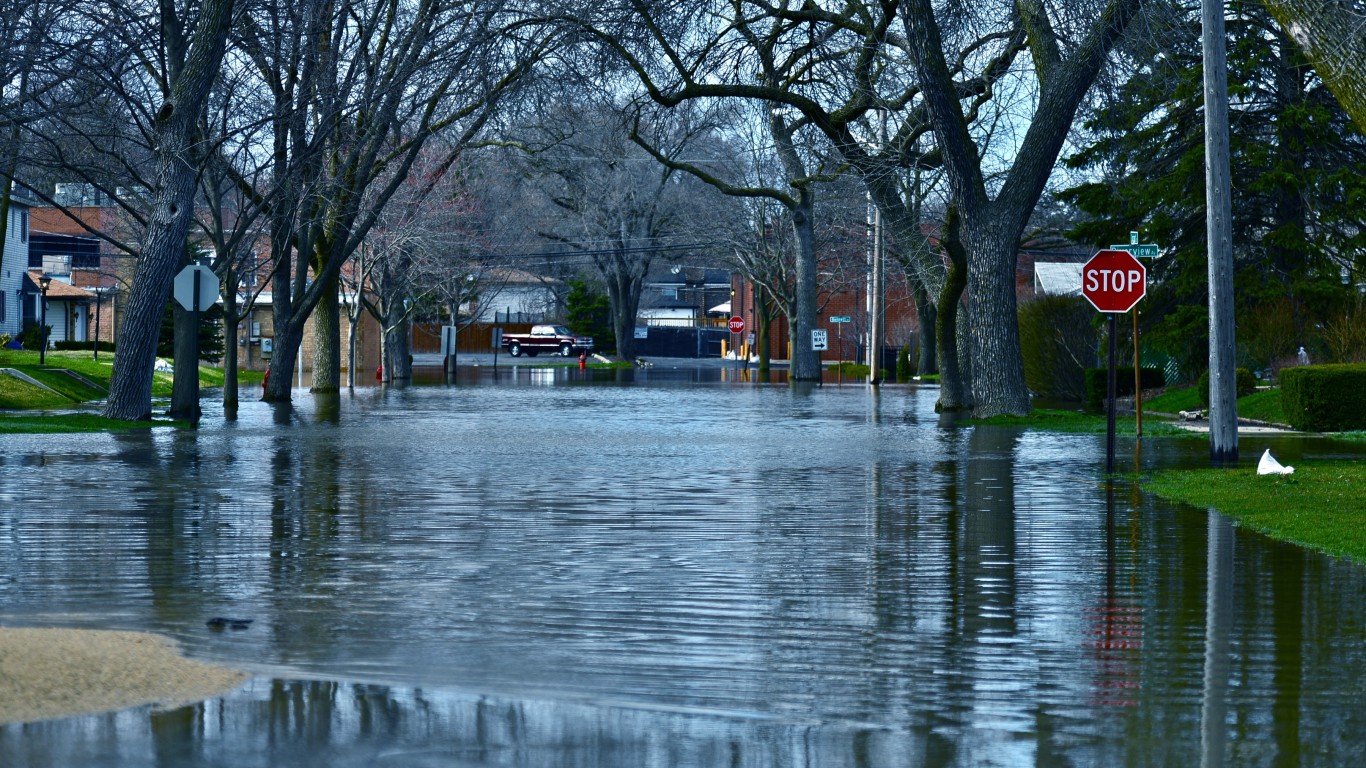
36. Illinois
> Disasters declared since 1953: 60 (tied — 21st fewest)
> National guard members: 24,325 (1.9 per 1,000 residents)
> State emergency dept. budget: $16.4 million (0.03% of total budget)
> Infrastructure score: 4.6 out of 10 (19th lowest)
> Population: 12,741,080

35. Vermont
> Disasters declared since 1953: 47 (9th fewest)
> National guard members: 3,452 (5.5 per 1,000 residents)
> State emergency dept. budget: $12.6 million (0.22% of total budget)
> Infrastructure score: 4.9 out of 10 (21st lowest)
> Population: 626,299
[in-text-ad]
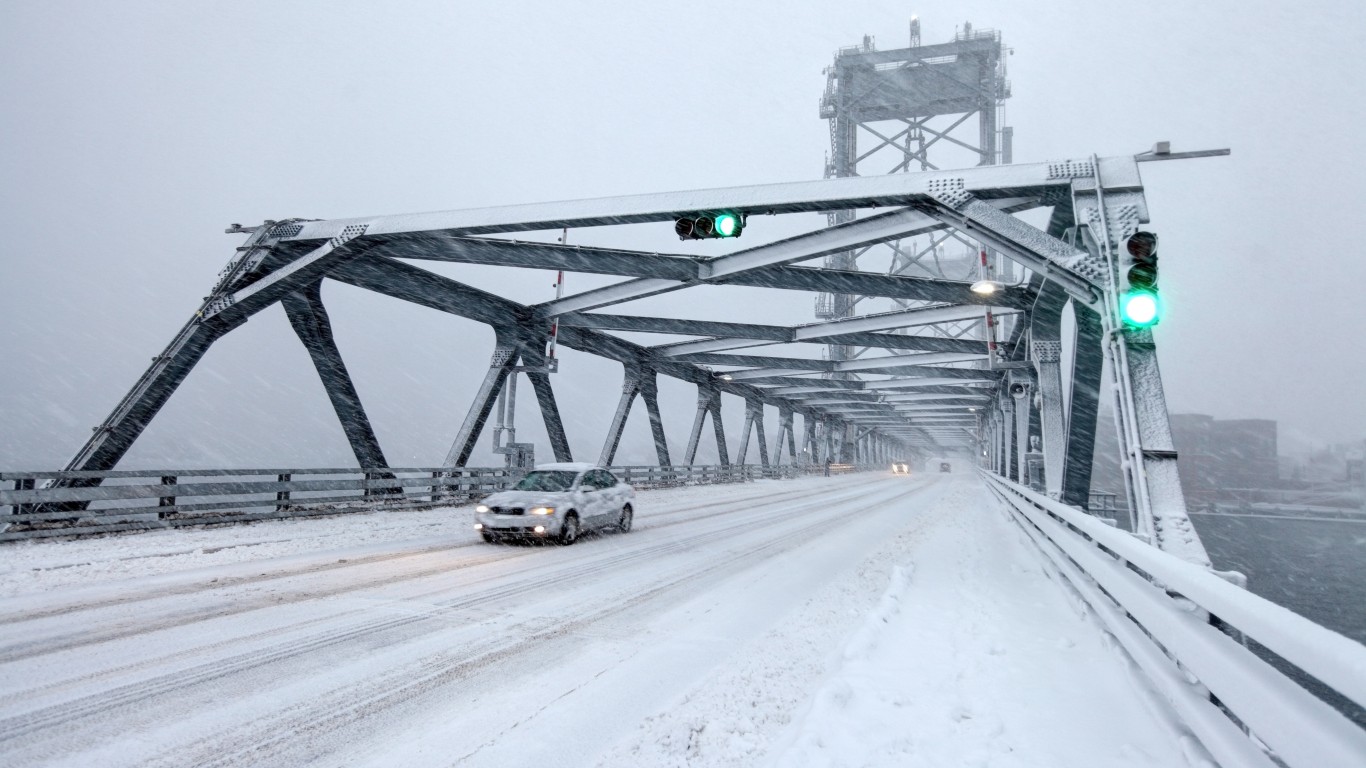
34. New Hampshire
> Disasters declared since 1953: 52 (15th fewest)
> National guard members: 4,148 (3.1 per 1,000 residents)
> State emergency dept. budget: $4.4 million (0.04% of total budget)
> Infrastructure score: 5.6 out of 10 (19th highest)
> Population: 1,356,458
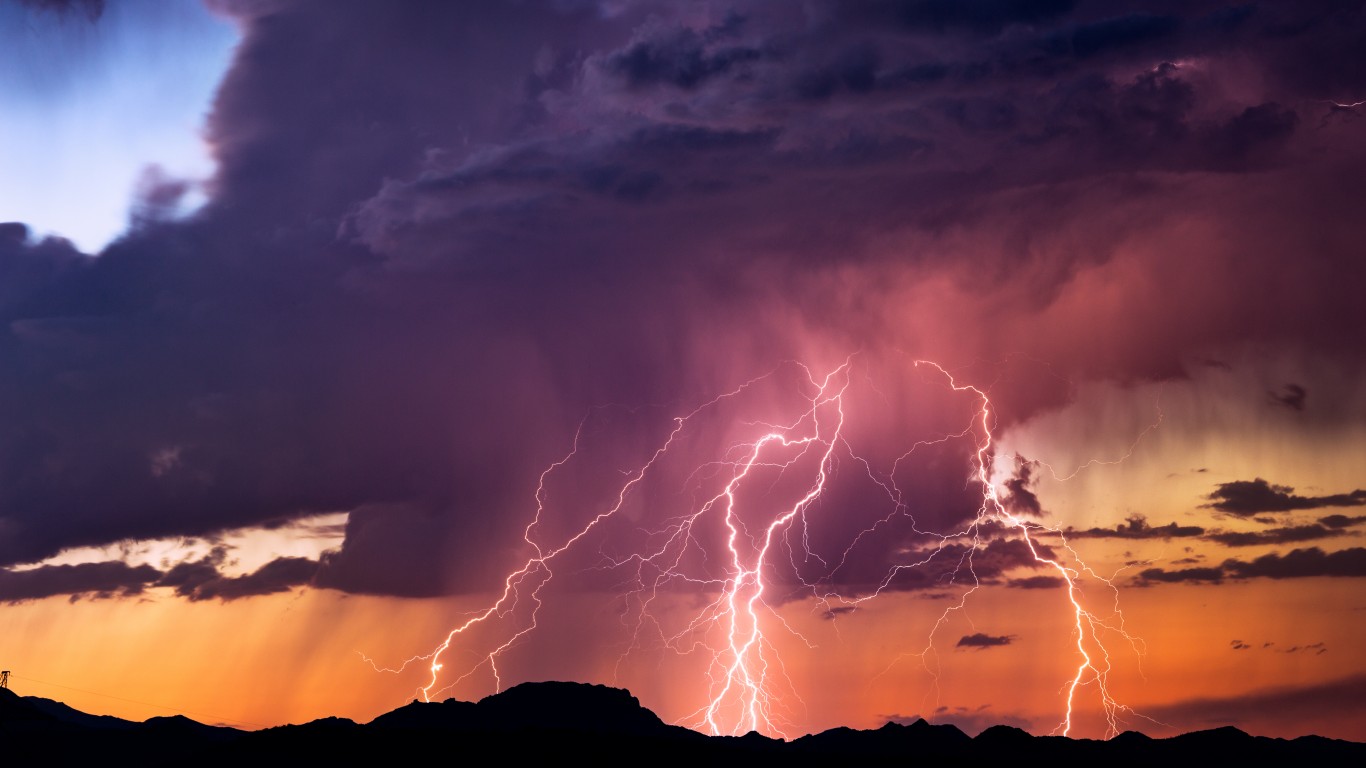
33. Arizona
> Disasters declared since 1953: 86 (tied — 11th most)
> National guard members: 15,243 (2.1 per 1,000 residents)
> State emergency dept. budget: $22.4 million (0.06% of total budget)
> Infrastructure score: 5.3 out of 10 (tied — 21st highest)
> Population: 7,171,646
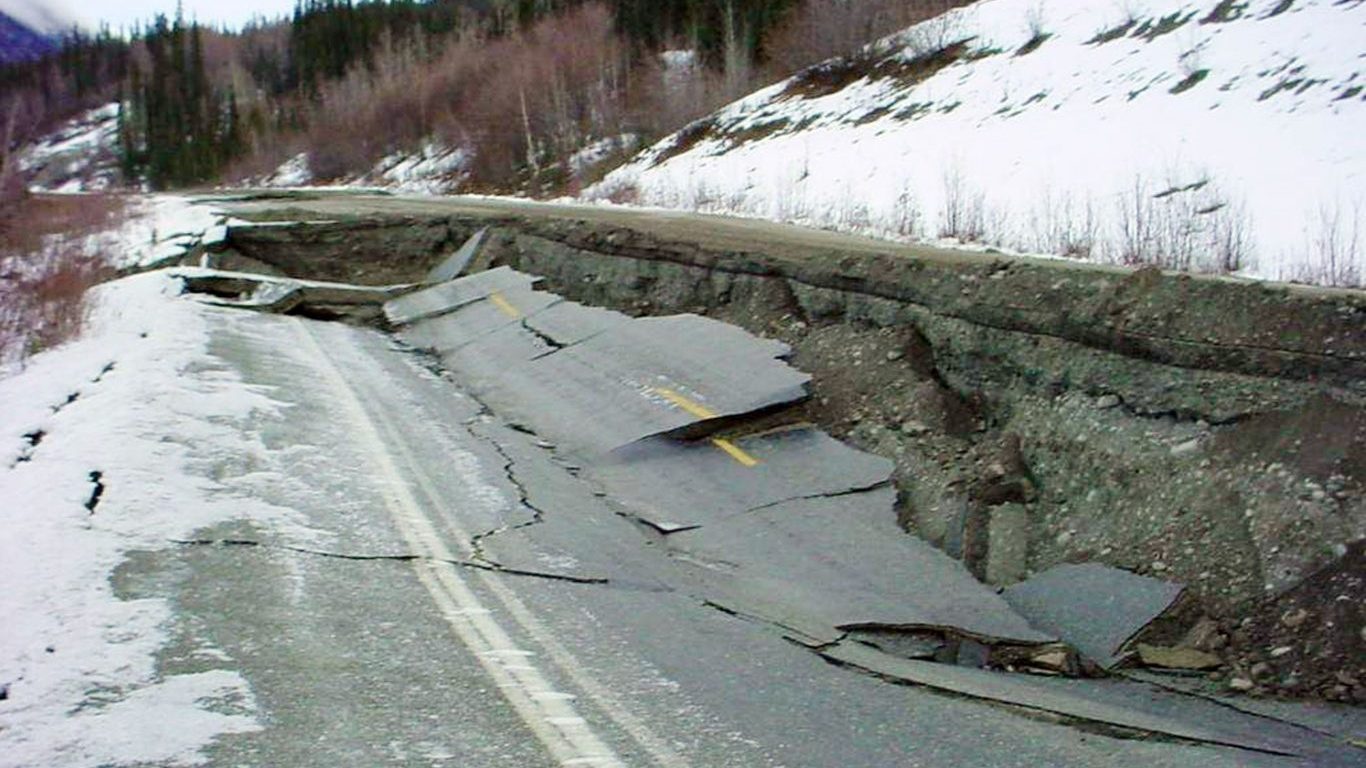
32. Alaska
> Disasters declared since 1953: 66 (tied — 25th fewest)
> National guard members: 4,663 (6.3 per 1,000 residents)
> State emergency dept. budget: $9.4 million (0.10% of total budget)
> Infrastructure score: 5.9 out of 10 (16th highest)
> Population: 737,438
[in-text-ad-2]

31. Wisconsin
> Disasters declared since 1953: 50 (tied — 13th fewest)
> National guard members: 14,348 (2.5 per 1,000 residents)
> State emergency dept. budget: $4.0 million (0.01% of total budget)
> Infrastructure score: 5.1 out of 10 (tied — 25th lowest)
> Population: 5,813,568

30. Kentucky
> Disasters declared since 1953: 77 (15th most)
> National guard members: 12,526 (2.8 per 1,000 residents)
> State emergency dept. budget: $5.5 million (0.05% of total budget)
> Infrastructure score: 5.2 out of 10 (tied — 23rd highest)
> Population: 4,468,402
[in-text-ad]

29. Michigan
> Disasters declared since 1953: 38 (7th fewest)
> National guard members: 15,333 (1.5 per 1,000 residents)
> State emergency dept. budget: $14.9 million (0.03% of total budget)
> Infrastructure score: 5.8 out of 10 (tied — 17th highest)
> Population: 9,995,915

28. Oregon
> Disasters declared since 1953: 112 (6th most)
> National guard members: 9,352 (2.2 per 1,000 residents)
> State emergency dept. budget: $253.4 million (0.34% of total budget)
> Infrastructure score: 5.8 out of 10 (tied — 17th highest)
> Population: 4,190,713

27. California
> Disasters declared since 1953: 303 (2nd most)
> National guard members: 56,782 (1.4 per 1,000 residents)
> State emergency dept. budget: $60.2 million (0.02% of total budget)
> Infrastructure score: 6.2 out of 10 (tied — 14th highest)
> Population: 39,557,045
[in-text-ad-2]
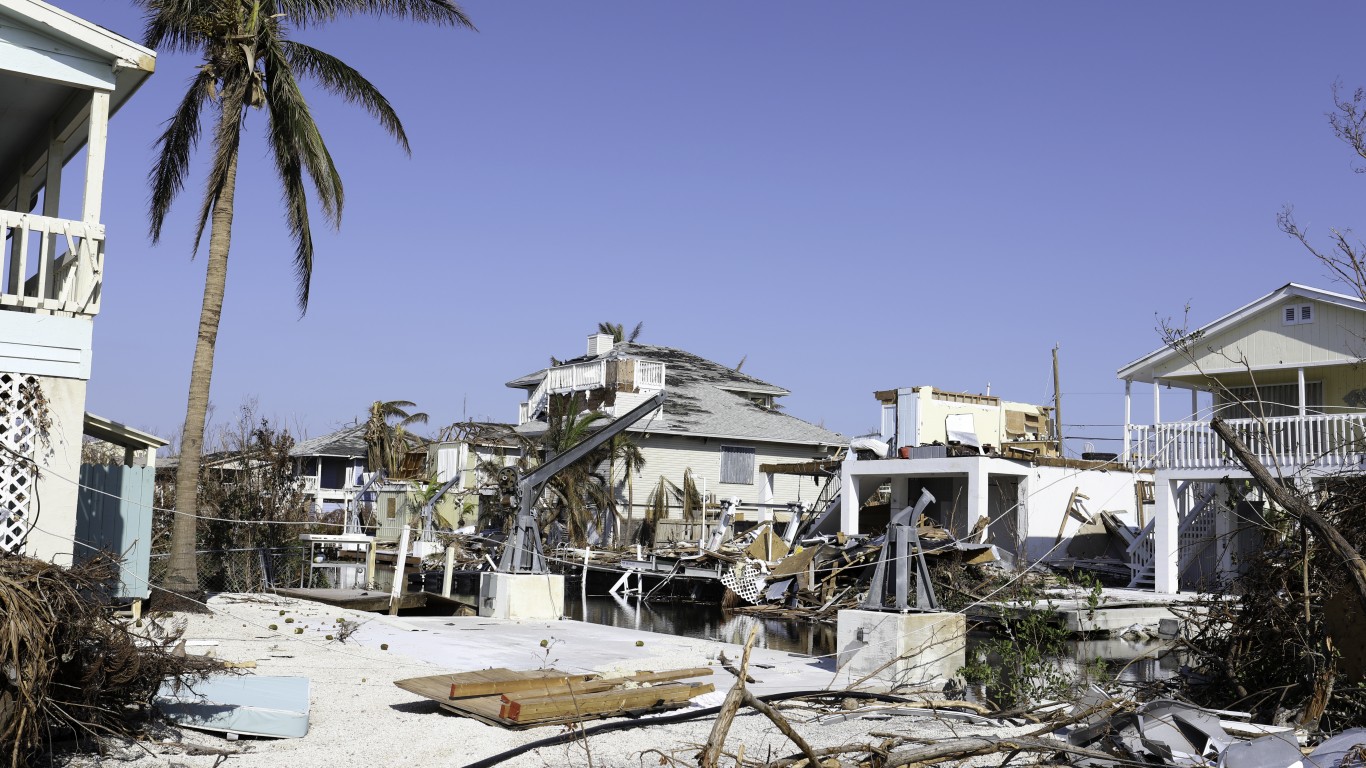
26. Florida
> Disasters declared since 1953: 147 (5th most)
> National guard members: 36,901 (1.7 per 1,000 residents)
> State emergency dept. budget: $331.1 million (0.40% of total budget)
> Infrastructure score: 5.2 out of 10 (tied — 23rd highest)
> Population: 21,299,325
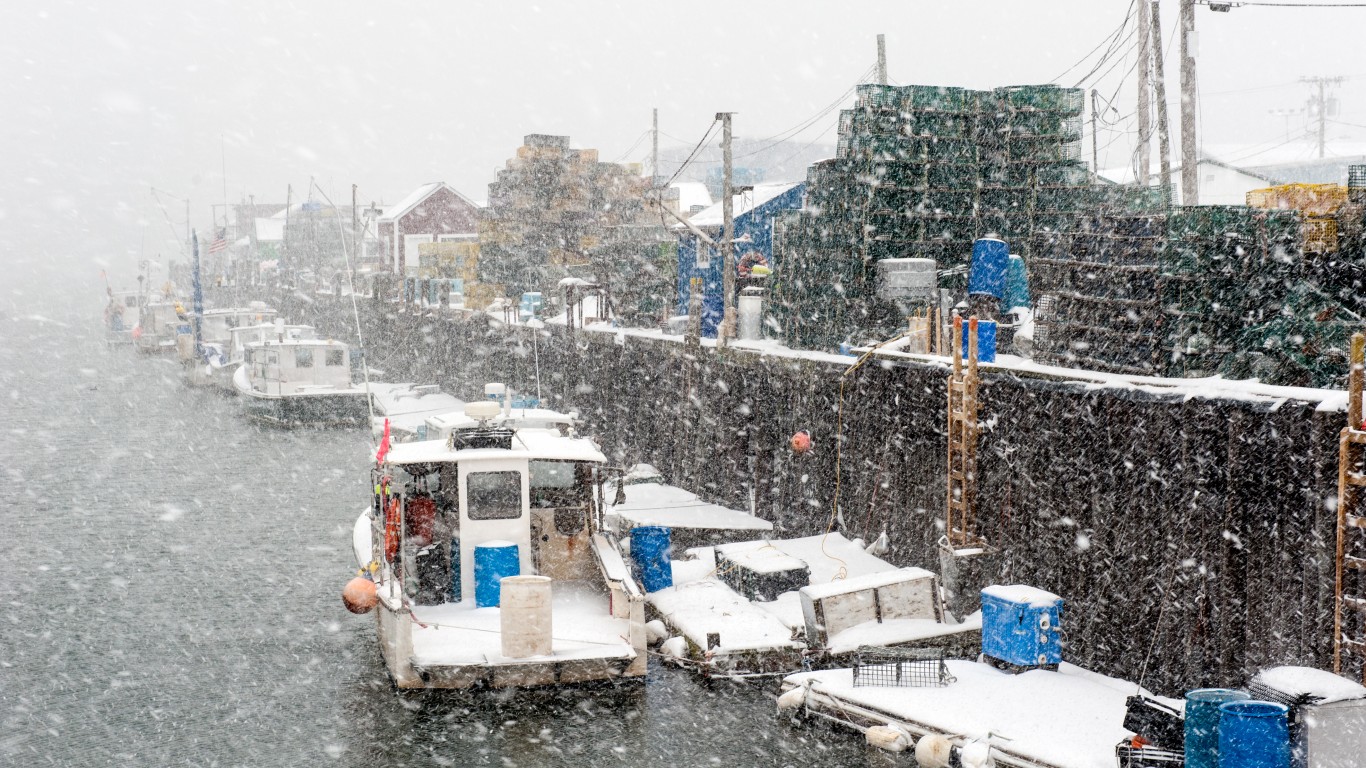
25. Maine
> Disasters declared since 1953: 59 (19th fewest)
> National guard members: 3,677 (2.7 per 1,000 residents)
> State emergency dept. budget: $0.7 million (0.04% of total budget)
> Infrastructure score: 7.2 out of 10 (tied — the highest)
> Population: 1,338,404
[in-text-ad]
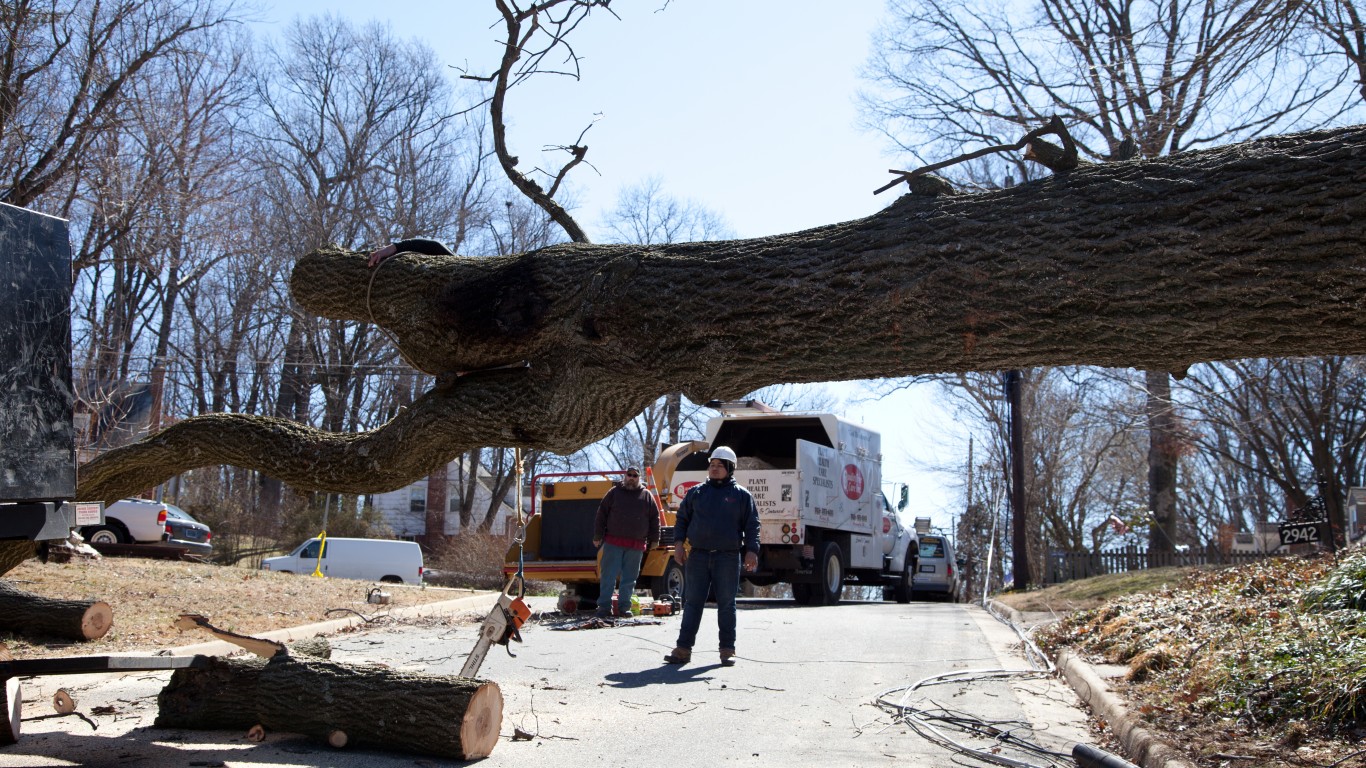
24. Virginia
> Disasters declared since 1953: 67 (tied — 24th most)
> National guard members: 25,647 (3.0 per 1,000 residents)
> State emergency dept. budget: $10.6 million (0.02% of total budget)
> Infrastructure score: 5.1 out of 10 (tied — 25th lowest)
> Population: 8,517,685
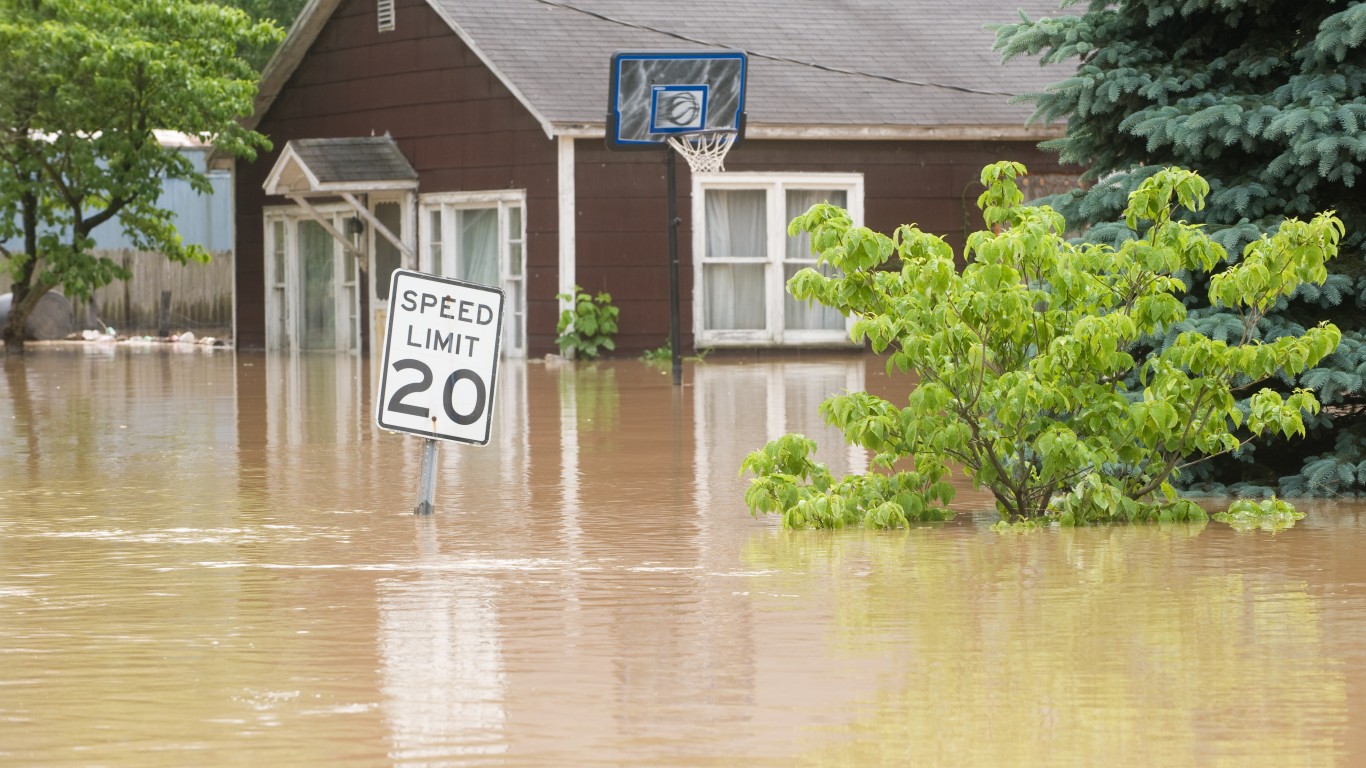
23. Indiana
> Disasters declared since 1953: 49 (11th fewest)
> National guard members: 18,366 (2.7 per 1,000 residents)
> State emergency dept. budget: $348.8 million (1.11% of total budget)
> Infrastructure score: 3.1 out of 10 (5th lowest)
> Population: 6,691,878
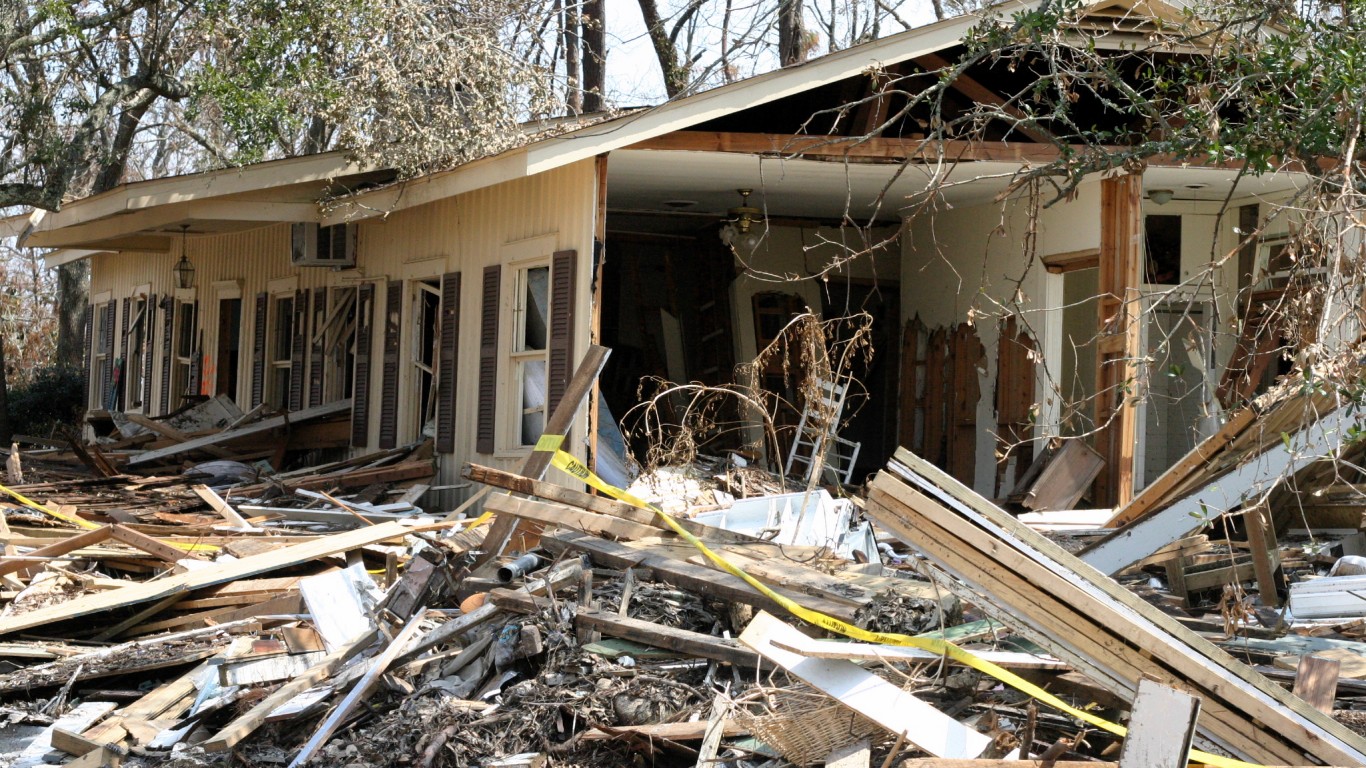
22. Mississippi
> Disasters declared since 1953: 75 (16th most)
> National guard members: 16,177 (5.4 per 1,000 residents)
> State emergency dept. budget: $11.0 million (0.19% of total budget)
> Infrastructure score: 3.6 out of 10 (9th lowest)
> Population: 2,986,530
[in-text-ad-2]

21. Minnesota
> Disasters declared since 1953: 70 (tied — 20th most)
> National guard members: 18,697 (3.3 per 1,000 residents)
> State emergency dept. budget: $58.9 million (0.15% of total budget)
> Infrastructure score: 5.0 out of 10 (tied — 23rd lowest)
> Population: 5,611,179

20. Montana
> Disasters declared since 1953: 82 (13th most)
> National guard members: 4,220 (4.0 per 1,000 residents)
> State emergency dept. budget: $34.5 million (1.39% of total budget)
> Infrastructure score: 5.5 out of 10 (20th highest)
> Population: 1,062,305
[in-text-ad]
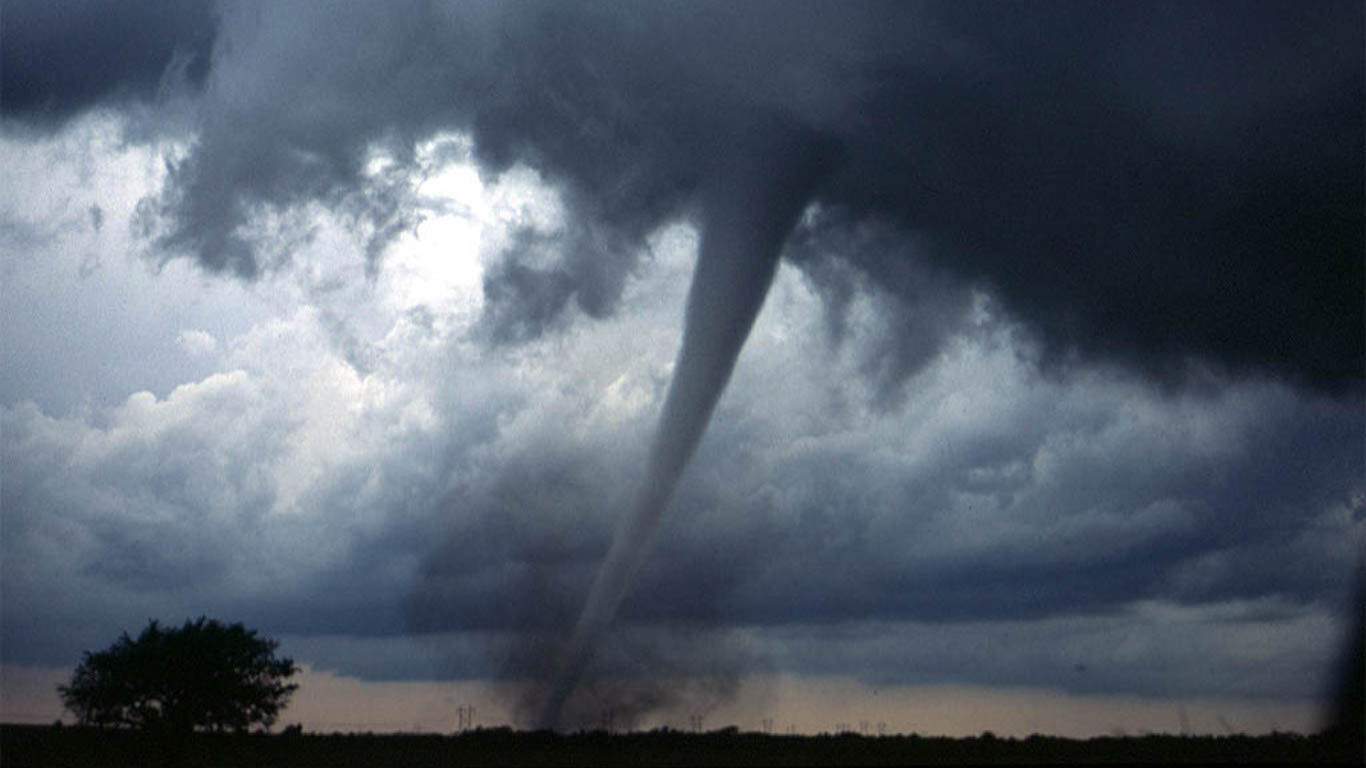
19. Oklahoma
> Disasters declared since 1953: 191 (3rd most)
> National guard members: 13,238 (3.4 per 1,000 residents)
> State emergency dept. budget: N/A
> Infrastructure score: 3.7 out of 10 (tied — 14th lowest)
> Population: 3,943,079
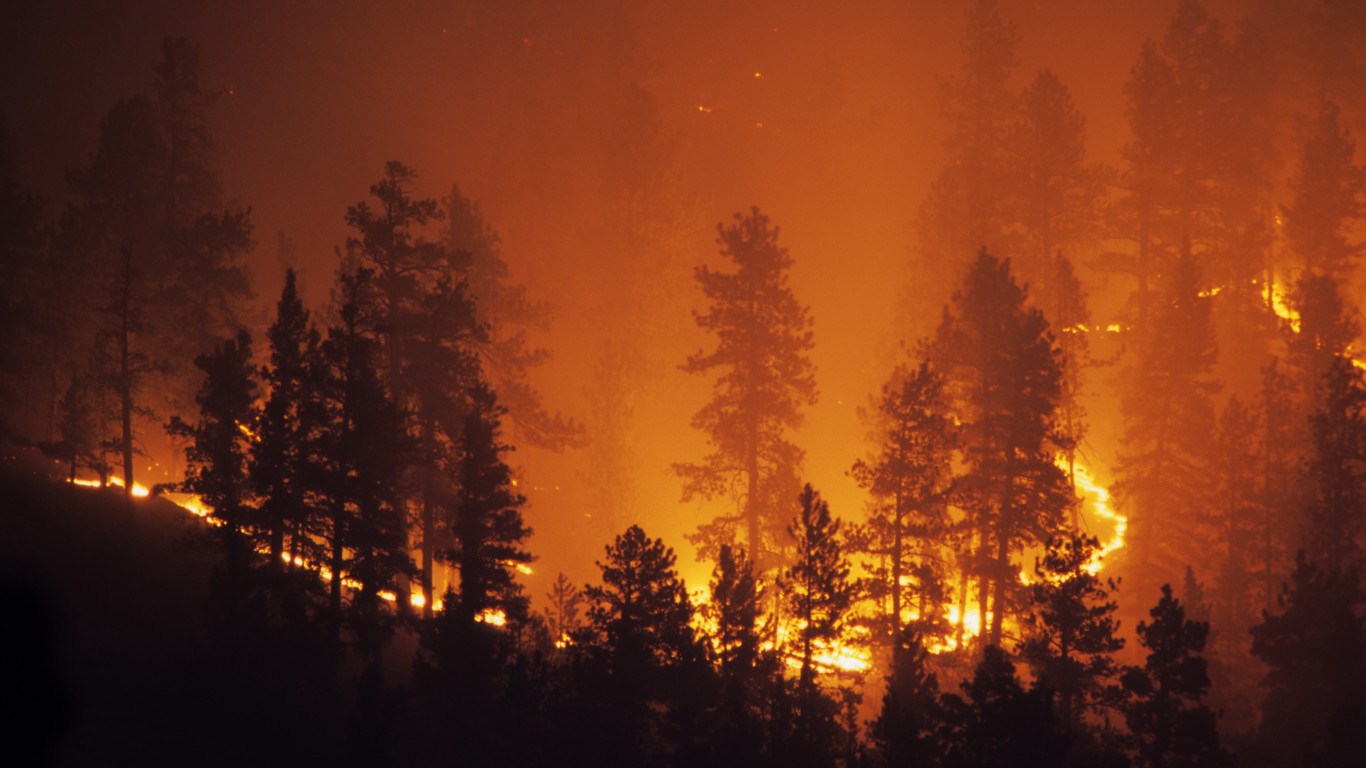
18. Colorado
> Disasters declared since 1953: 91 (8th most)
> National guard members: 13,588 (2.4 per 1,000 residents)
> State emergency dept. budget: $32.7 million (0.12% of total budget)
> Infrastructure score: 6.3 out of 10 (tied — 12th highest)
> Population: 5,695,564

17. Pennsylvania
> Disasters declared since 1953: 60 (tied — 21st fewest)
> National guard members: 29,420 (2.3 per 1,000 residents)
> State emergency dept. budget: $1.9 million (0.01% of total budget)
> Infrastructure score: 6.2 out of 10 (tied — 14th highest)
> Population: 12,807,060
[in-text-ad-2]
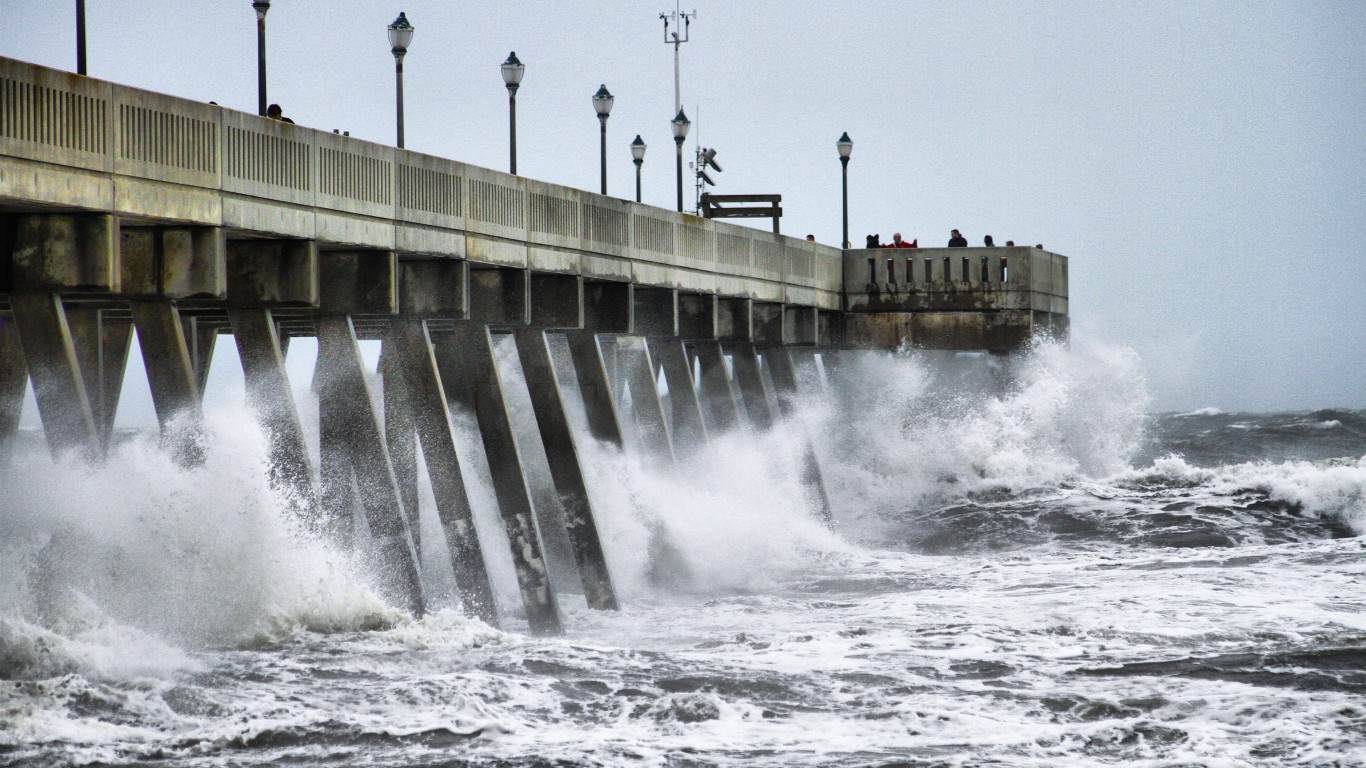
16. North Carolina
> Disasters declared since 1953: 63 (22nd fewest)
> National guard members: 21,035 (2.0 per 1,000 residents)
> State emergency dept. budget: $8.6 million (0.04% of total budget)
> Infrastructure score: 6.6 out of 10 (10th highest)
> Population: 10,383,620
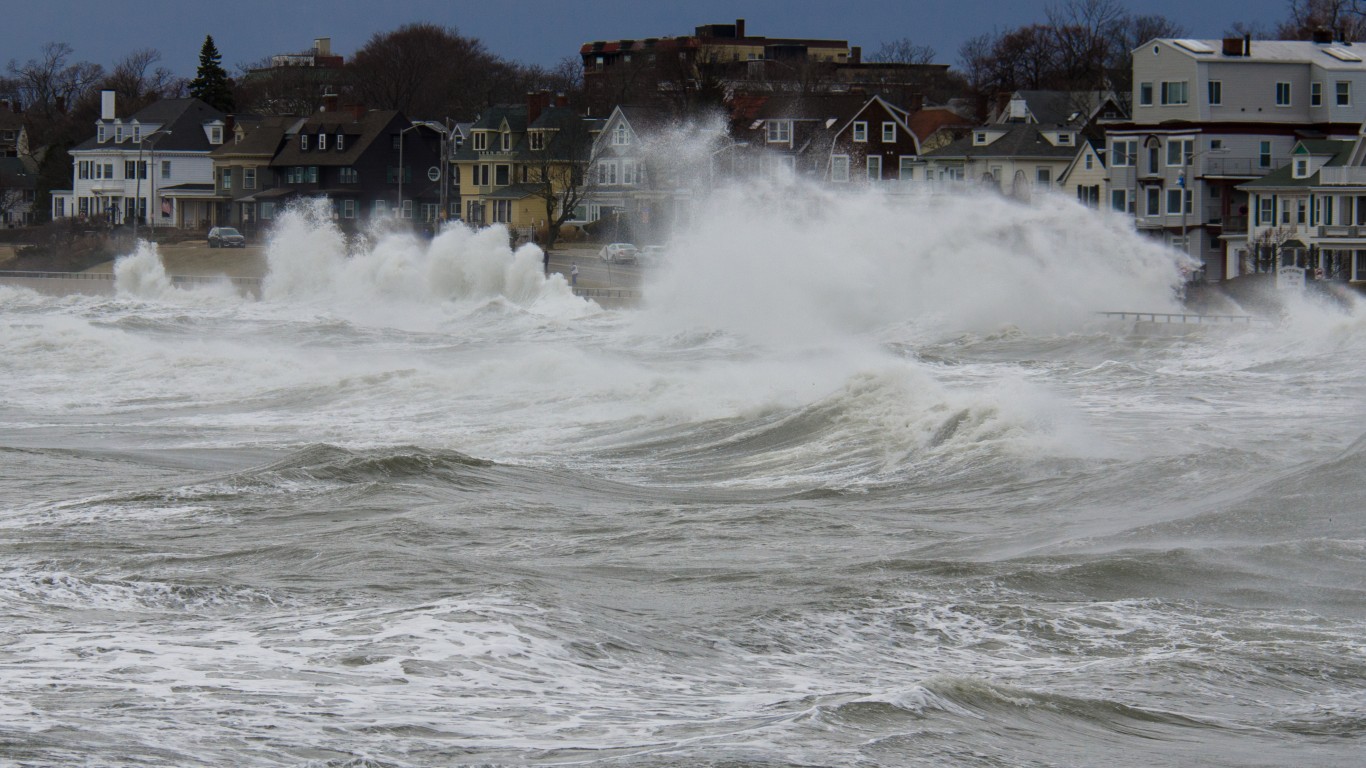
15. Massachusetts
> Disasters declared since 1953: 50 (tied — 13th fewest)
> National guard members: 15,045 (2.2 per 1,000 residents)
> State emergency dept. budget: $8.6 million (0.02% of total budget)
> Infrastructure score: 6.7 out of 10 (tied — 6th highest)
> Population: 6,902,149
[in-text-ad]
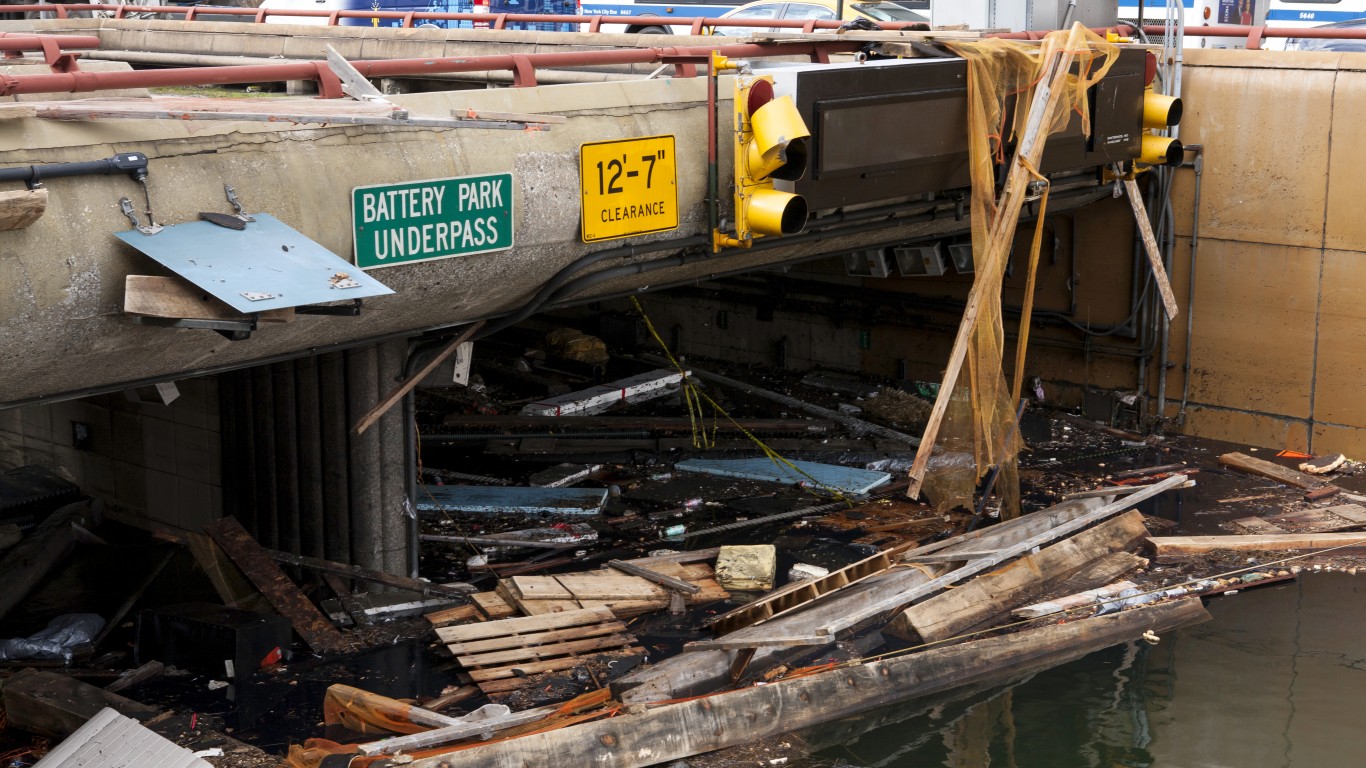
14. New York
> Disasters declared since 1953: 97 (7th most)
> National guard members: 28,861 (1.5 per 1,000 residents)
> State emergency dept. budget: $1.43 billion (0.91% of total budget)
> Infrastructure score: 5.3 out of 10 (tied — 21st highest)
> Population: 19,542,209
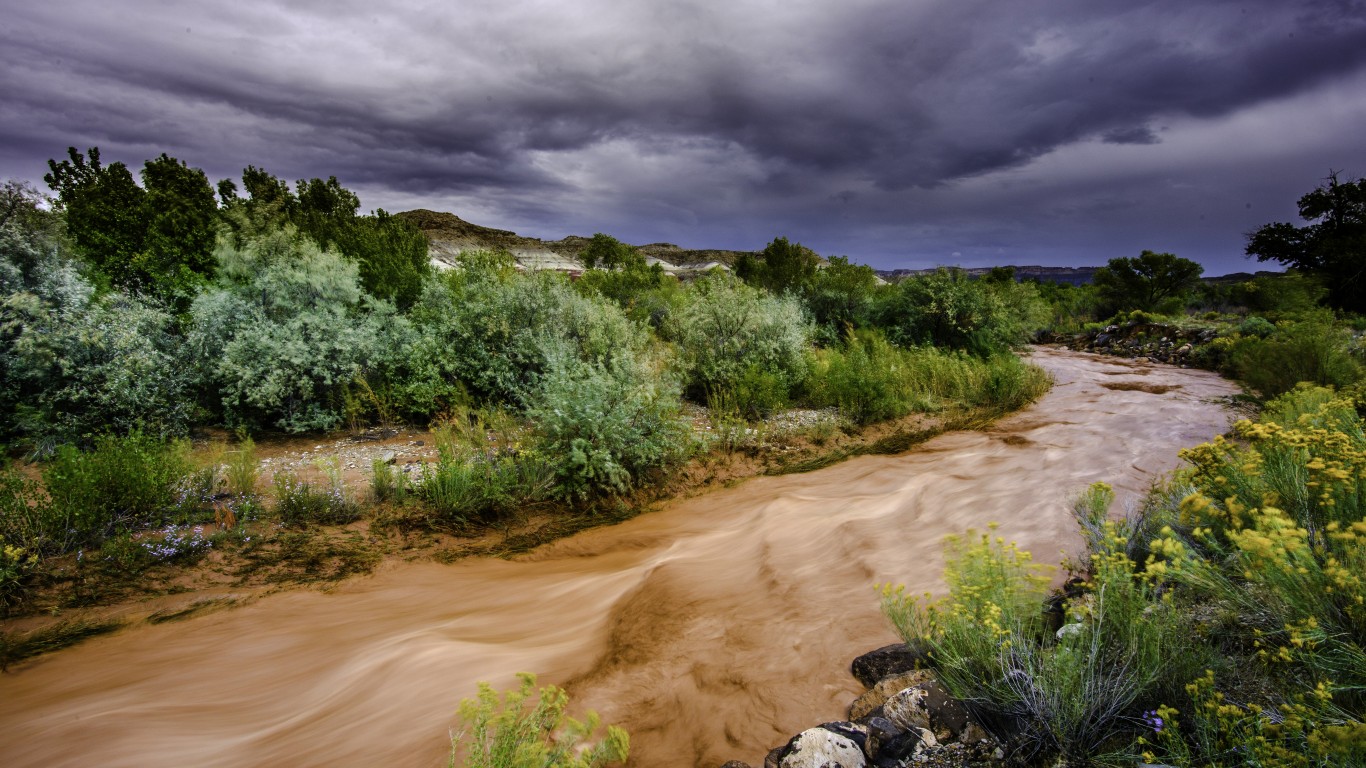
13. Utah
> Disasters declared since 1953: 39 (8th fewest)
> National guard members: 11,987 (3.8 per 1,000 residents)
> State emergency dept. budget: $33.5 million (0.21% of total budget)
> Infrastructure score: 5.2 out of 10 (tied — 23rd highest)
> Population: 3,161,105
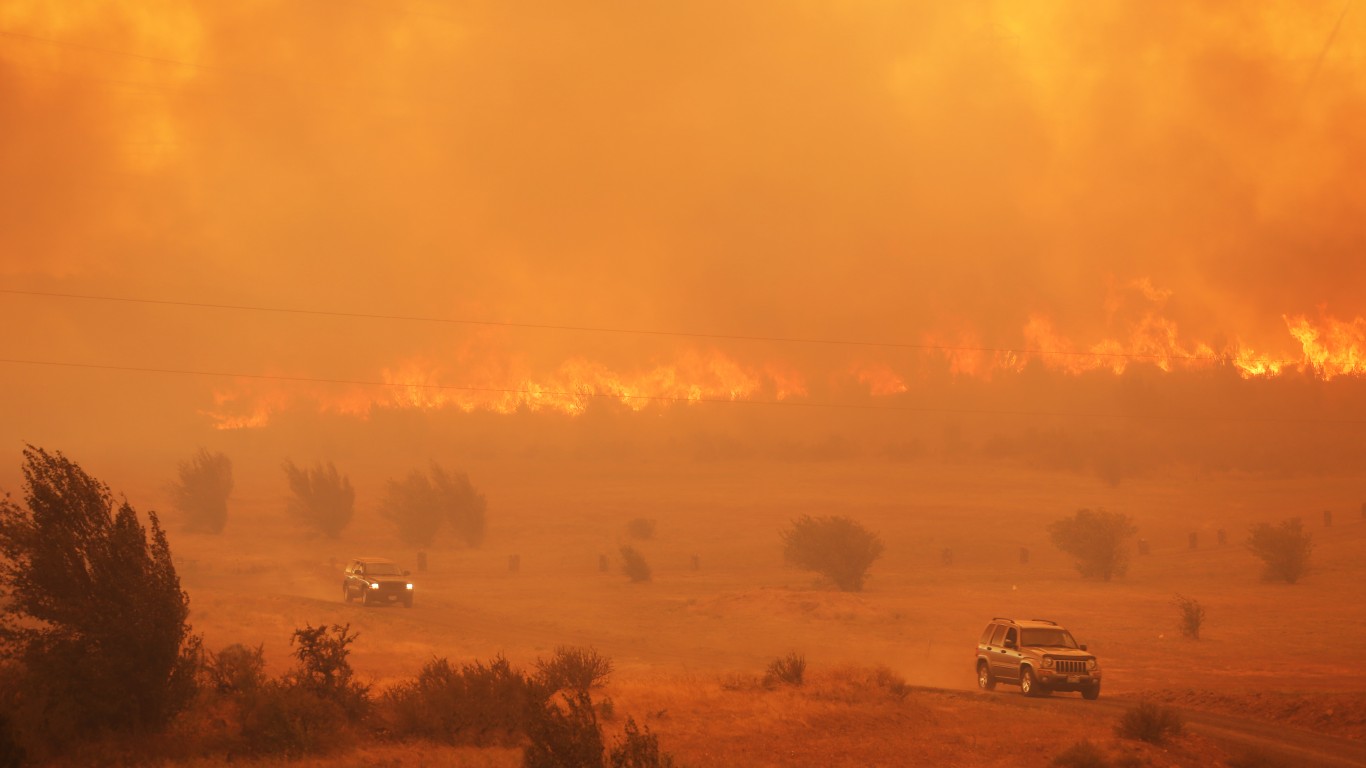
12. Washington
> Disasters declared since 1953: 162 (4th most)
> National guard members: 18,115 (2.4 per 1,000 residents)
> State emergency dept. budget: $144.4 million (0.31% of total budget)
> Infrastructure score: 6.9 out of 10 (5th highest)
> Population: 7,535,591
[in-text-ad-2]
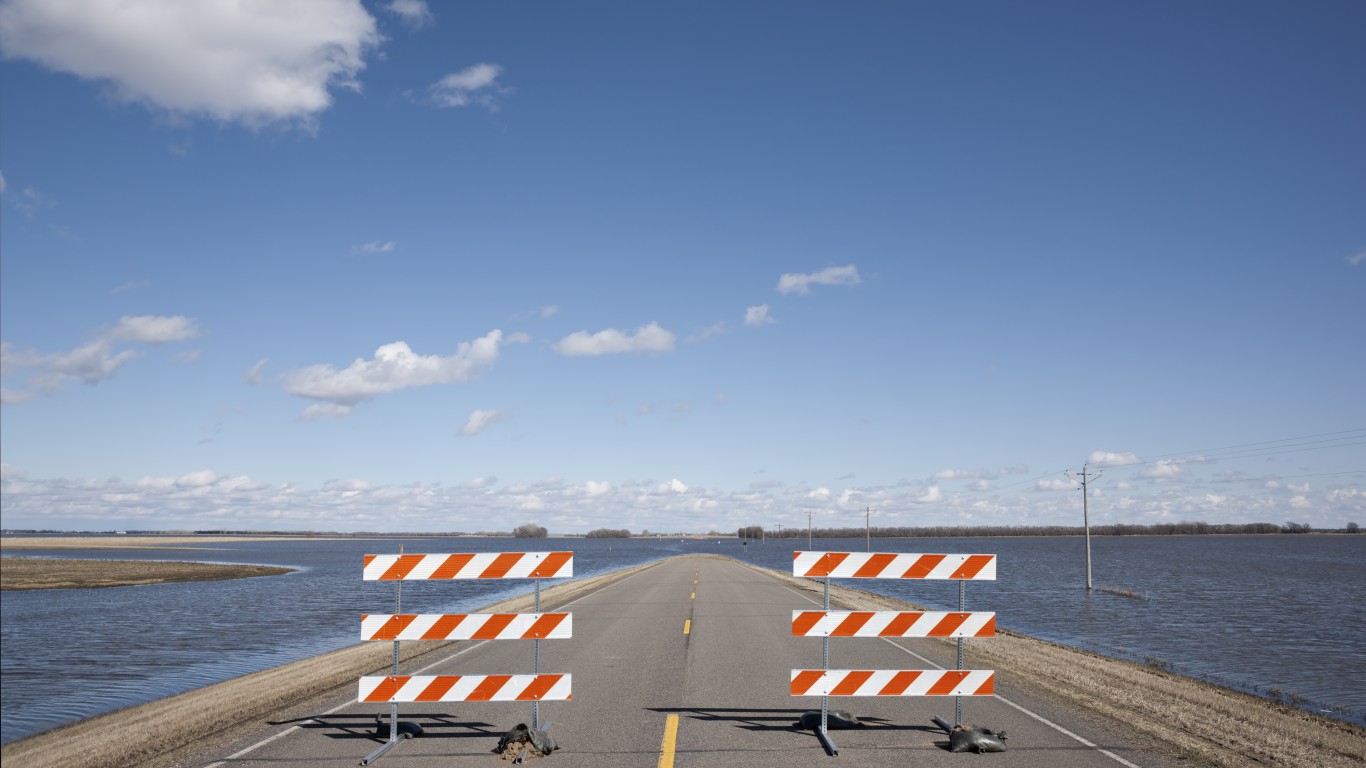
11. North Dakota
> Disasters declared since 1953: 58 (18th fewest)
> National guard members: 4,385 (5.8 per 1,000 residents)
> State emergency dept. budget: $166.1 million (2.06% of total budget)
> Infrastructure score: 3.2 out of 10 (6th lowest)
> Population: 760,077
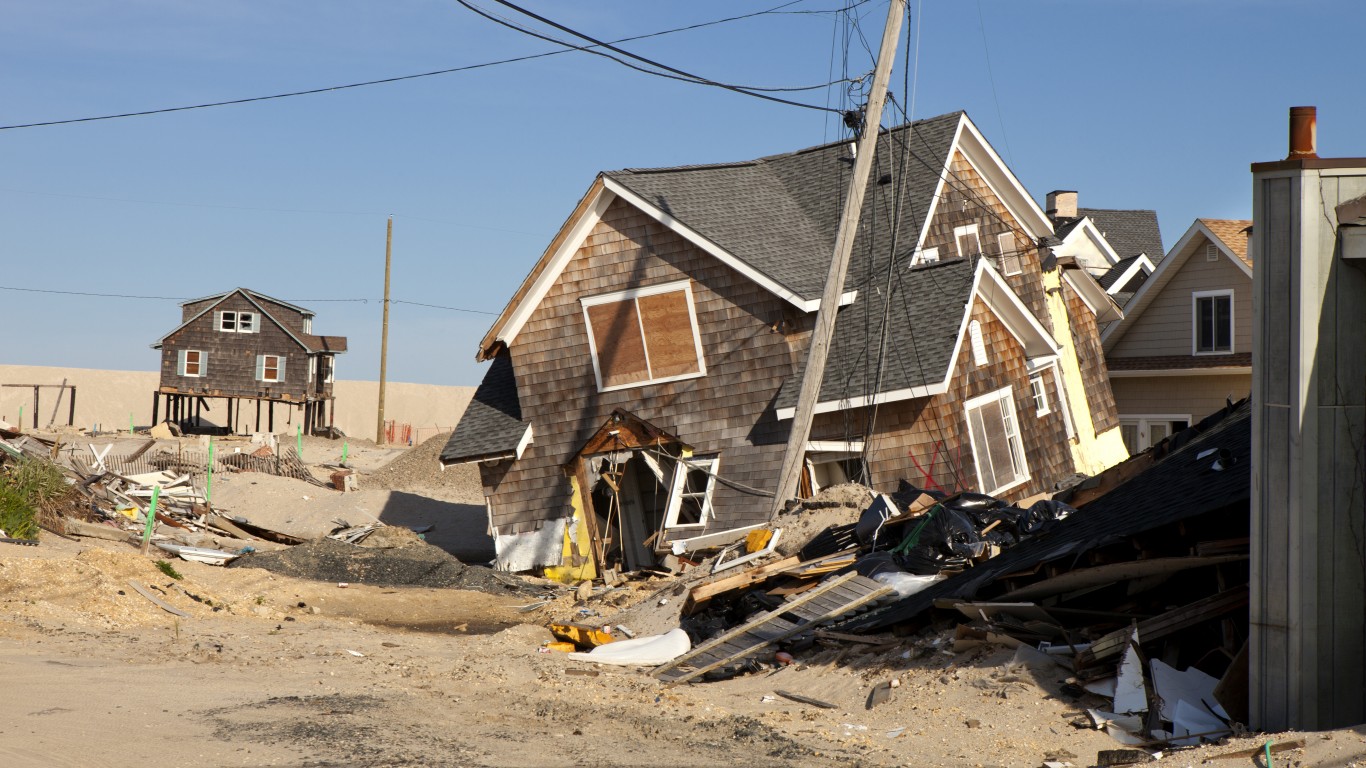
10. New Jersey
> Disasters declared since 1953: 51 (14th fewest)
> National guard members: 17,376 (2.0 per 1,000 residents)
> State emergency dept. budget: $10.0 million (0.03% of total budget)
> Infrastructure score: 7.2 out of 10 (tied — the highest)
> Population: 8,908,520
[in-text-ad]
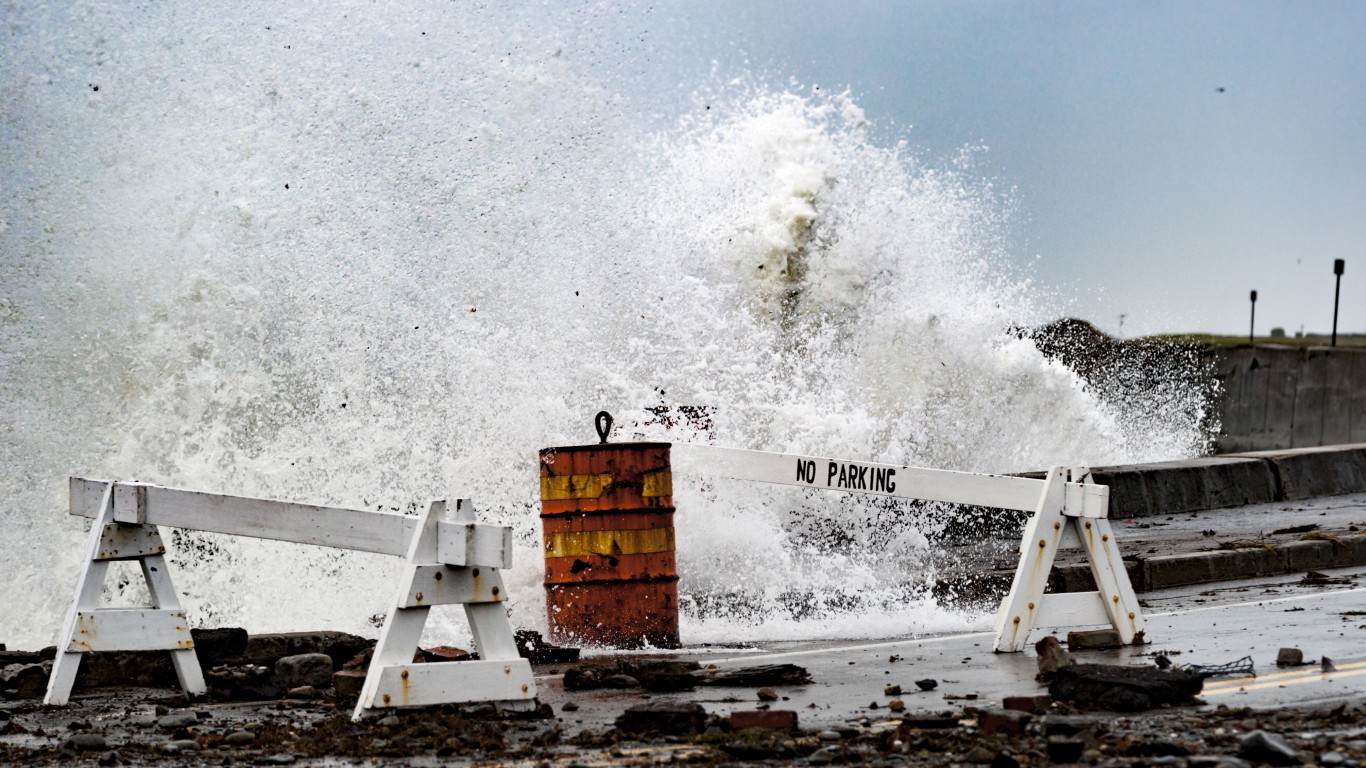
9. Rhode Island
> Disasters declared since 1953: 22 (2nd fewest)
> National guard members: 4,246 (4.0 per 1,000 residents)
> State emergency dept. budget: $4.3 million (0.05% of total budget)
> Infrastructure score: 6.4 out of 10 (11th highest)
> Population: 1,057,315

8. Iowa
> Disasters declared since 1953: 66 (tied — 25th fewest)
> National guard members: 10,861 (3.4 per 1,000 residents)
> State emergency dept. budget: $2.2 million (0.01% of total budget)
> Infrastructure score: 7.1 out of 10 (tied — 3rd highest)
> Population: 3,156,145
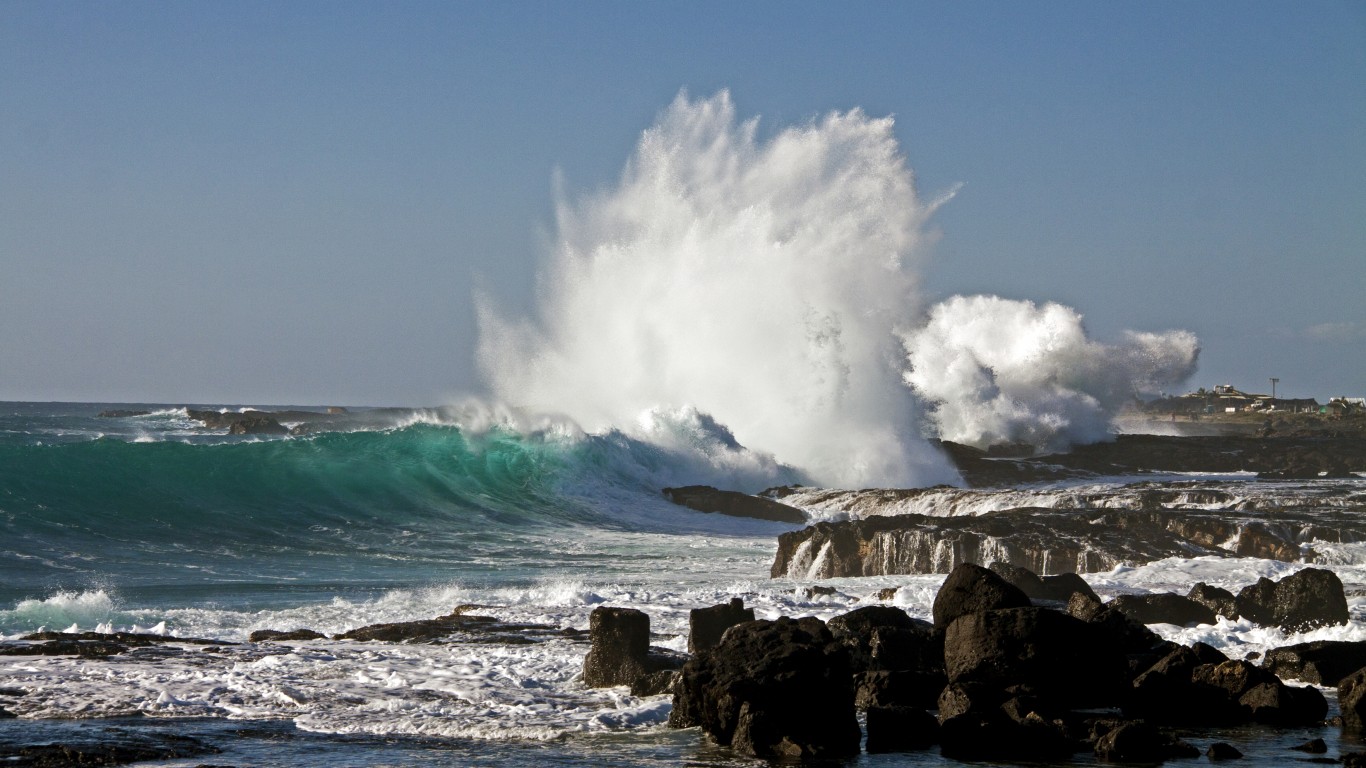
7. Hawaii
> Disasters declared since 1953: 53 (16th fewest)
> National guard members: 9,501 (6.7 per 1,000 residents)
> State emergency dept. budget: $6.7 million (0.05% of total budget)
> Infrastructure score: 5.0 out of 10 (tied — 23rd lowest)
> Population: 1,420,491
[in-text-ad-2]
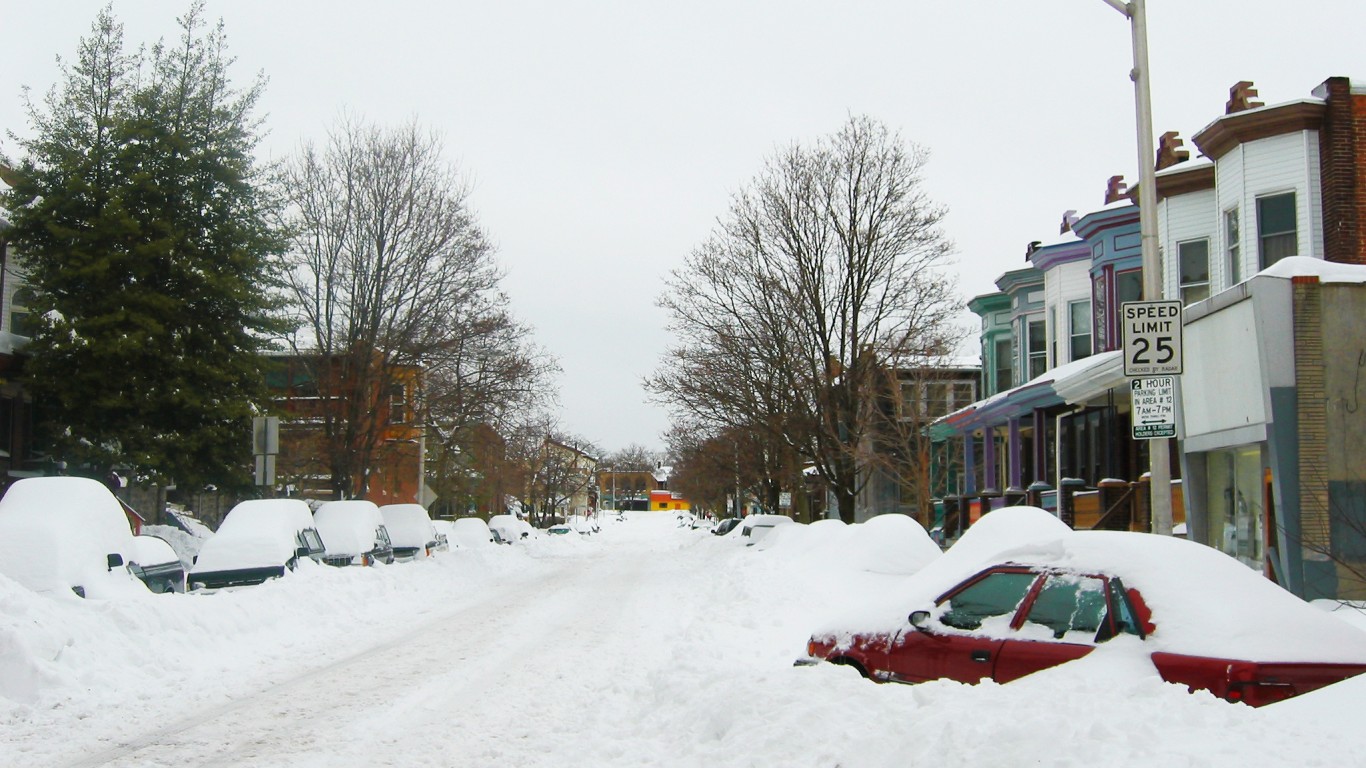
6. Maryland
> Disasters declared since 1953: 34 (tied — 6th fewest)
> National guard members: 18,819 (3.1 per 1,000 residents)
> State emergency dept. budget: $6.1 million (0.01% of total budget)
> Infrastructure score: 6.7 out of 10 (tied — 6th highest)
> Population: 6,042,718
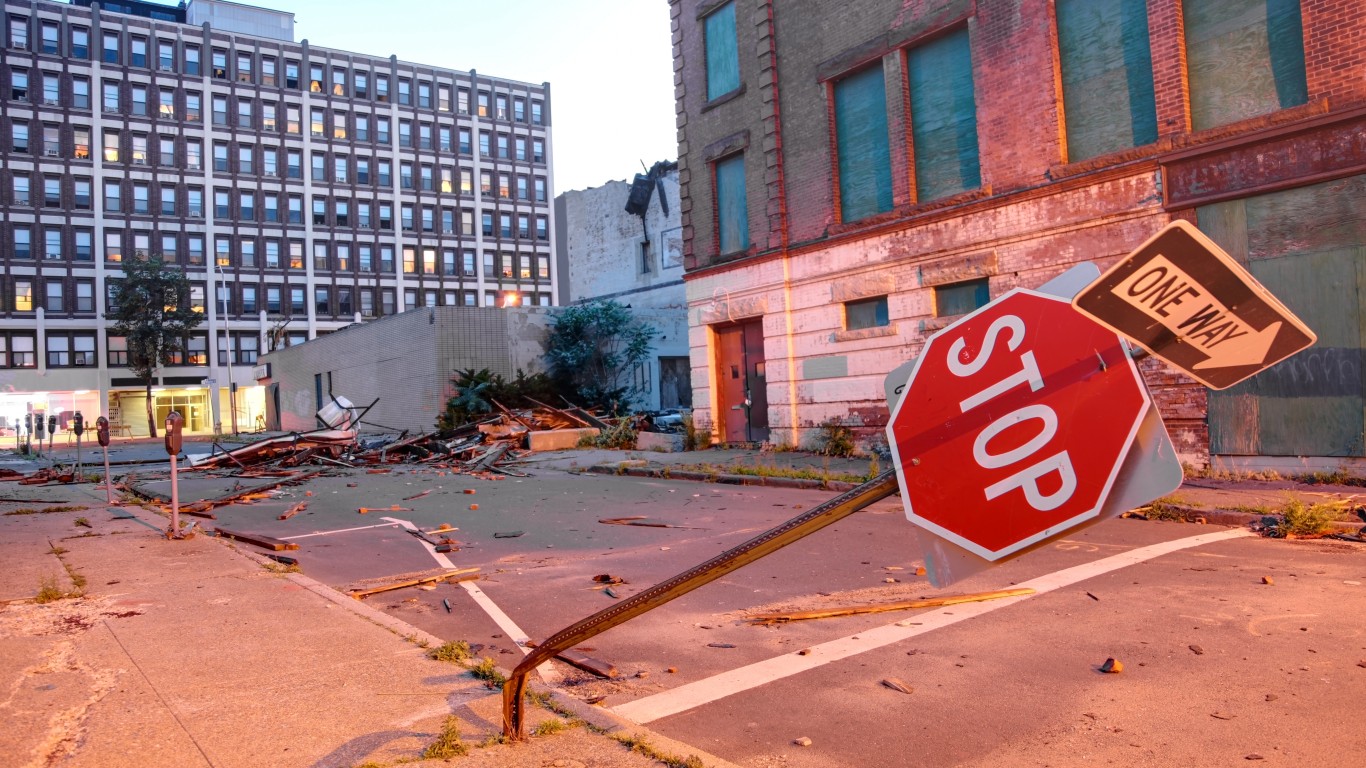
5. Connecticut
> Disasters declared since 1953: 33 (4th fewest)
> National guard members: 6,795 (1.9 per 1,000 residents)
> State emergency dept. budget: $174.7 million (0.88% of total budget)
> Infrastructure score: 6.7 out of 10 (tied — 6th highest)
> Population: 3,572,665
[in-text-ad]
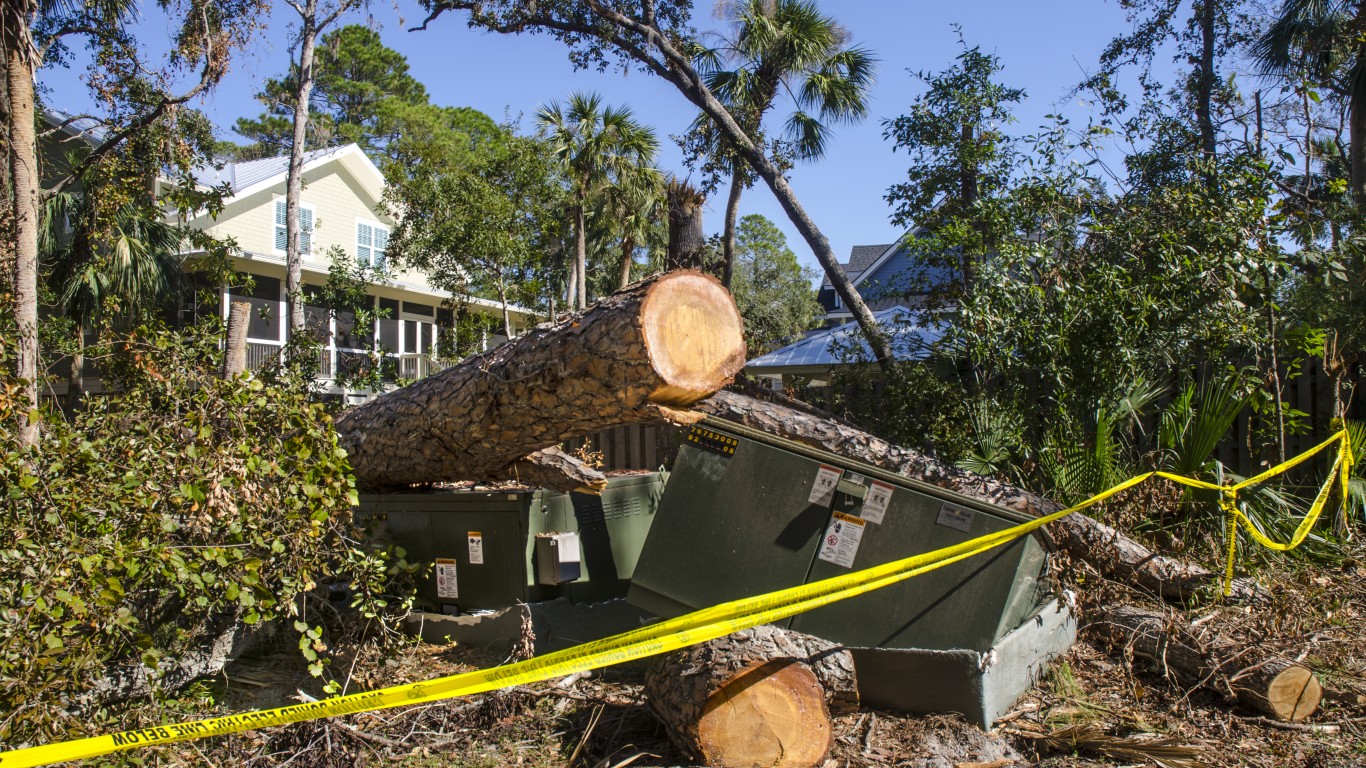
4. South Carolina
> Disasters declared since 1953: 32 (3rd fewest)
> National guard members: 17,668 (3.5 per 1,000 residents)
> State emergency dept. budget: $20.0 million (0.09% of total budget)
> Infrastructure score: 7.1 out of 10 (tied — 3rd highest)
> Population: 5,084,127
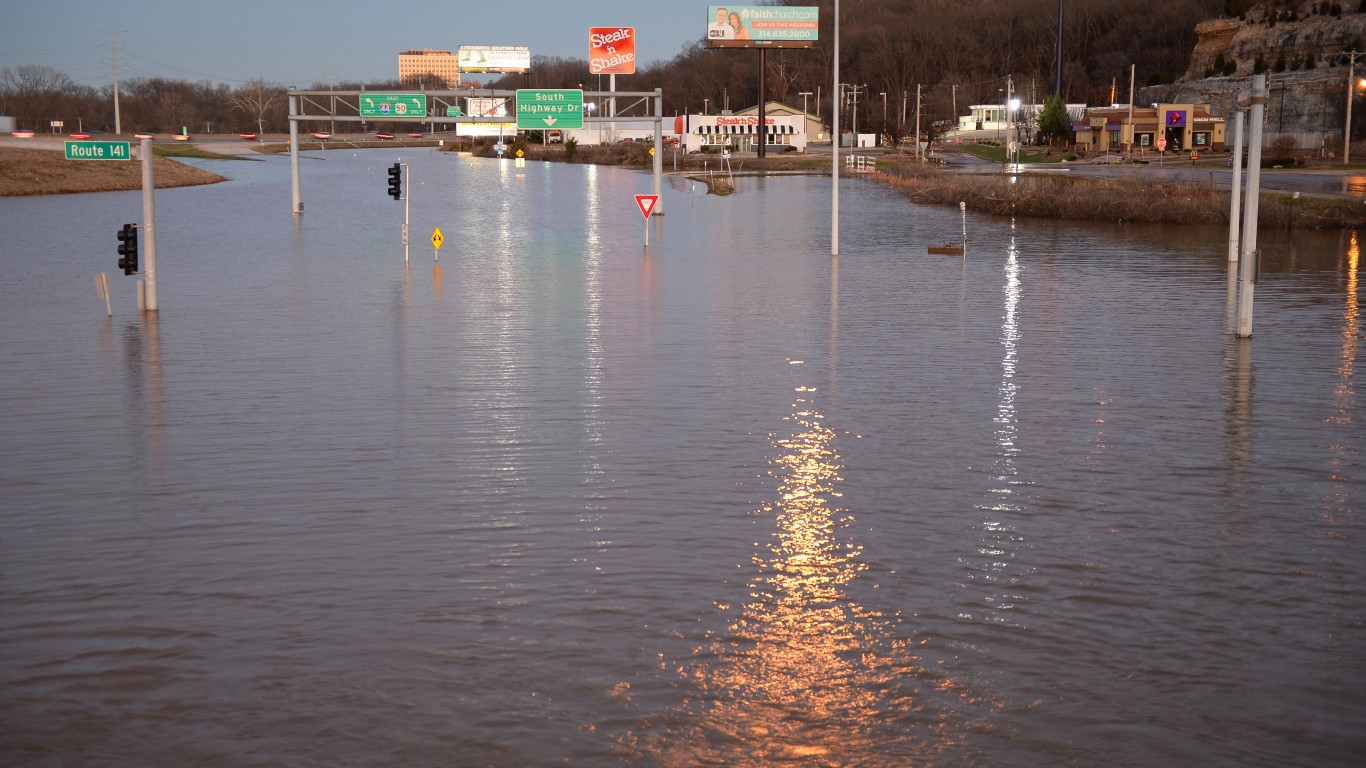
3. Missouri
> Disasters declared since 1953: 70 (tied — 20th most)
> National guard members: 19,254 (3.1 per 1,000 residents)
> State emergency dept. budget: N/A
> Infrastructure score: 4.5 out of 10 (18th lowest)
> Population: 6,126,452

2. Delaware
> Disasters declared since 1953: 21 (the fewest)
> National guard members: 4,997 (5.2 per 1,000 residents)
> State emergency dept. budget: $134.0 million (3.28% of total budget)
> Infrastructure score: 6.7 out of 10 (tied — 6th highest)
> Population: 967,171
[in-text-ad-2]
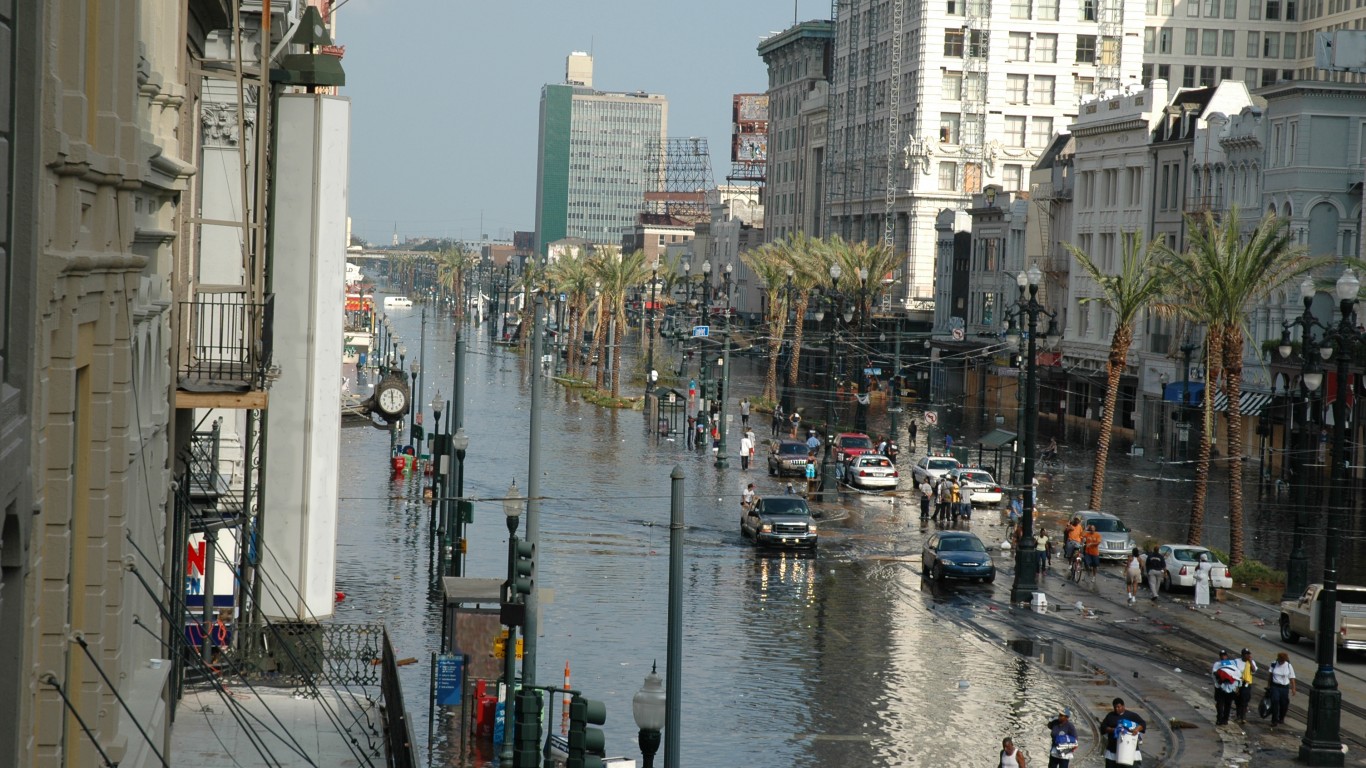
1. Louisiana
> Disasters declared since 1953: 81 (14th most)
> National guard members: 17,163 (3.7 per 1,000 residents)
> State emergency dept. budget: $1.30 billion (4.59% of total budget)
> Infrastructure score: 6.3 out of 10 (tied — 12th highest)
> Population: 4,659,978
Credit card companies are pulling out all the stops, with the issuers are offering insane travel rewards and perks.
We’re talking huge sign-up bonuses, points on every purchase, and benefits like lounge access, travel credits, and free hotel nights. For travelers, these rewards can add up to thousands of dollars in flights, upgrades, and luxury experiences every year.
It’s like getting paid to travel — and it’s available to qualified borrowers who know where to look.
We’ve rounded up some of the best travel credit cards on the market. Click here to see the list. Don’t miss these offers — they won’t be this good forever.
Thank you for reading! Have some feedback for us?
Contact the 24/7 Wall St. editorial team.